The Best of Andalusia in 10 days.
We’ve lived in Andalusia for almost 5 years now. It’s a great region with some incredible historical attractions, wonderful natural highlights and a unique culture.
It’s not easy making a 10 day “Best of Andalusia itinerary” because there’s too much to see. 10 days only covers the basics. But I’ll give you an itinerary in this post that I would recommend to my best friend: it’ll cover many of the classic Andalusian destinations but it will also include a few very underrated destinations that will take you (slightly) off the beaten path.
Note: I also give you lots of money-saving tips on attractions. What most people don’t know is that many highlights in Spain have free times, you just have to plan ahead. Why pay 11.50 Euros to a site like the Mezquita when you can see it for free?
I’ve made this itinerary tight, practical and easy. No need to rent a car, in fact this itinerary is built around train travel (which is excellent in Spain). Almost all the destinations I cover are within 2 hours of each other so there’s little time lost. Finally, I include a couple of day trips that require taking a tour…but I also give you a few alternatives if that’s something you don’t like to do.
Here are my recommendations on seeing the best of Andalusia in 10 days.
Day 1 – Malaga (day 1 of 2)
Malaga airport gets plenty of international flights from all over. It is the gateway to Andalusia and where you should start your Andalusian adventures.
Malaga is one of the oldest cities in the world with a history dating back to the Phoenicians (around 800 BC). But most of the highlight attractions date to the Romans (who were here from 218 BC to 476 AD) and especially the Moors (who ruled from 711 AD to 1487)*.
*I’ll refer to the Moors a lot in this post. The term Moors refers to the Muslim Arabs and Berbers who invaded from Northern Africa in 711 AD. They ruled almost all of the Iberian Peninsula and Andalusia (or Al-Andalus) was where they left their greatest legacy. You’ll find fortresses, palaces, mosques and baths all over the region. Their influence has been preserved in architecture, music, language and in the fruits, vegetables and cuisine they introduced to Spain. The Moors started losing territory to the Christians over the centuries in what is referred to as the “reconquesta” (the reconquest). In 1492, the last Moorish stronghold in Spain – Granada – was defeated. It marked the end of 780-years of Islamic rule over the Iberian Peninsula.
What to see in Malaga: The old town is small but attractive. Visit Malaga Cathedral, the 2nd highest Cathedral in Andalusia (built starting in 1582, it only has 1 tower). With an extra ticket, you can also visit the roof (“Las Cubiertas”). There you get great views of the city and the port/sea. A little further into the old town is the Roman Theatre which is Malaga’s oldest monument (built in the 1st Century BC under Emperor Augustus). Right next to it is the Alcazaba, the fortress/palace built by the Moors during the 11th century. It is a huge fortress that defended the city for over 400 years and it was only surrendered (in 1487 to the Christians) after a 4 month siege when provisions of food ran out. The next stop should be Castillo de Gibralfaro – up the hill above the Alcazaba, this 2nd fortress looks out over the whole city giving you incredible views in every direction. It’s my favorite highlight in Malaga.
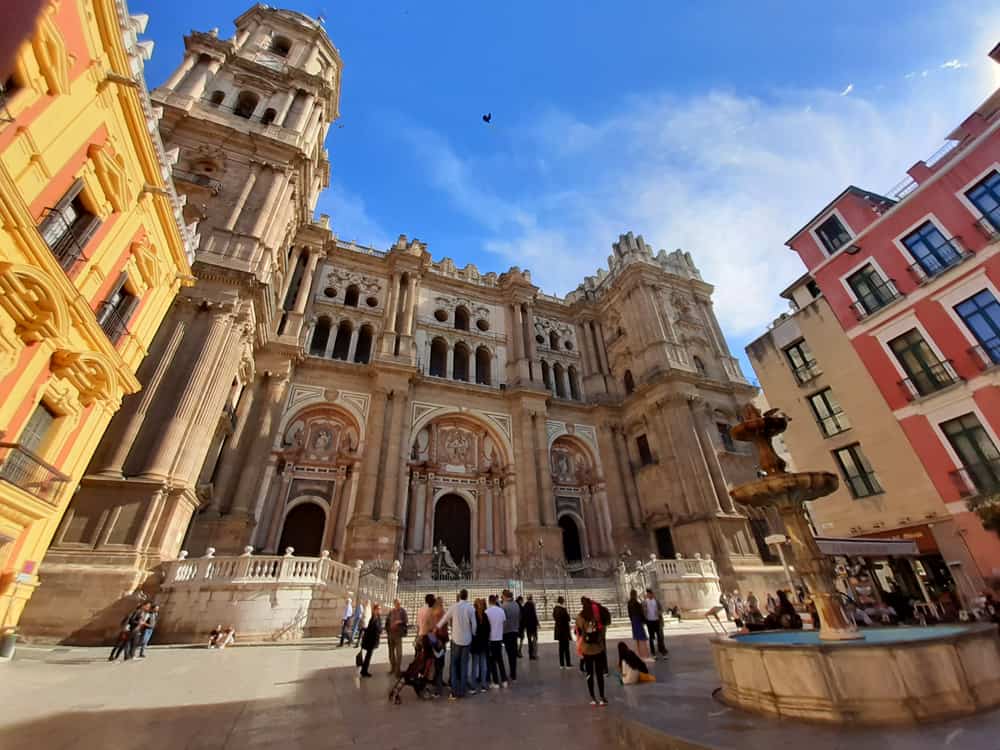

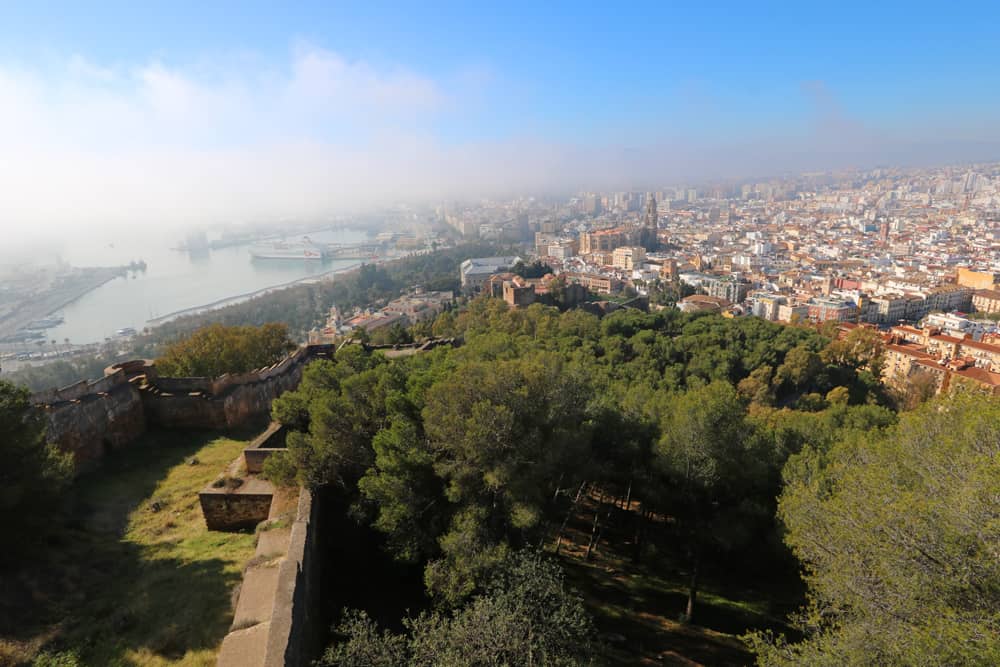
The above are the “must see” highlights of Malaga and they’ll take up most of your first day. There’s more to see (the port and the Picasso museum for example), which you can save for Day 2 if you wish. I’ll get to Day 2 in a minute.
More on Malaga including hotel and restaurant recommendations.
Day 2 – From Malaga, excursion to Caminito del Rey (or other options)
One of the most famous attractions in Spain is the Caminito del Rey, a trail through a narrow gorge along a river (except that the trail is about 100 meters high above the river, built into the cliff). It is stunning.
The best way to do this is with a tour from Malaga. This tour is recommended. They pick you up next to Malaga’s train station, drive you the 75 minutes to the Caminito del Rey, take you through the trail (approx. 3 hours), then drive you back to Malaga.
The whole tour will take about 7 hours and will get you back to Malaga around 4 in the afternoon. If you want to do the Caminito del Rey you should book early, I’d recommend at least a month in advance. It’s very popular.
I go into great detail on the Caminito del Rey in this post.
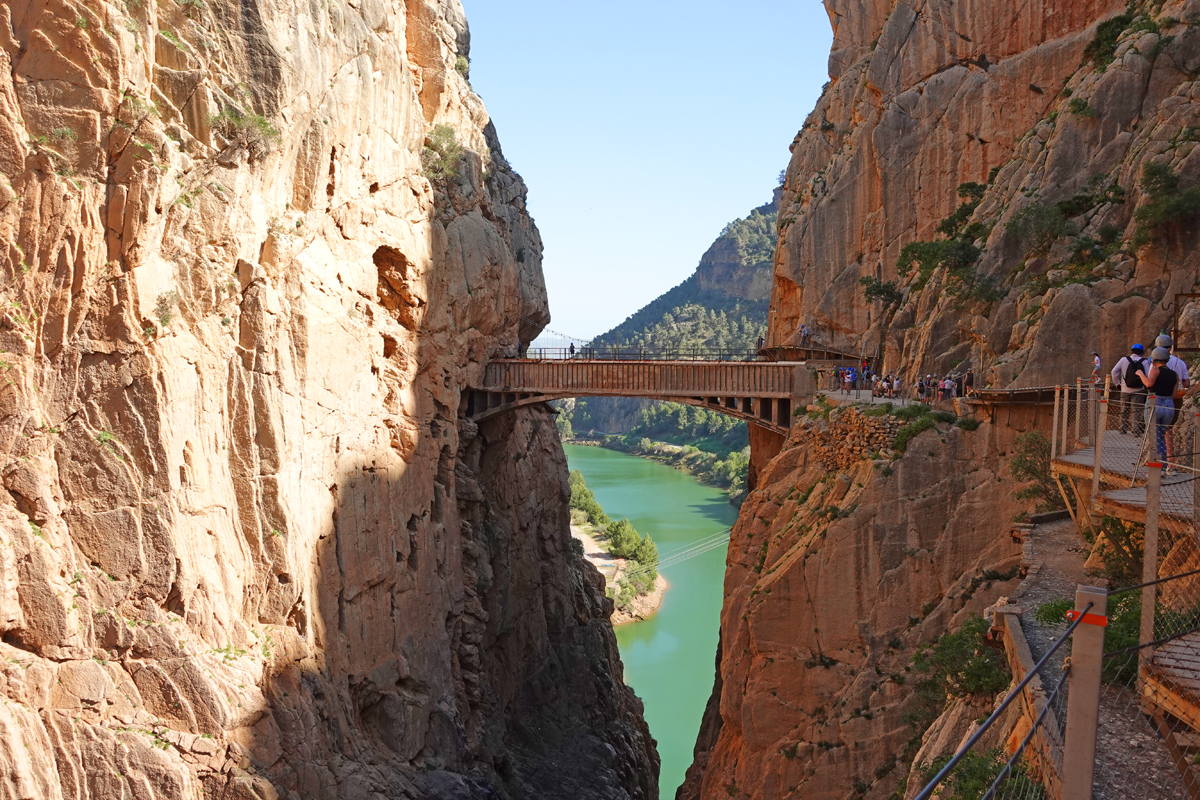
Alternative options for Day 2:
If you can’t or don’t want to do the Caminito del Rey, I recommend a few alternatives:
- If you want some beach time, you can go to Malagueta beach. An easy walk from Malaga’s center.
- Visit Nerja. A lovely town on the coast (we lived there over 2 years) that is very popular with visitors. Take the Alsa bus to get there, it takes about 75 minutes. This post covers all the things to do in Nerja.
- Walk around Malaga. If you feel like exploring more of Malaga, I’ve mentioned up top that there is more to see; explore the old town in greater depth, walk the seaside promenade (Palmoral de las Sorpresas), walk around the port area and see Malagueta beach. If you want to explore a museum, go to the Pompidou Center or the Picasso Museum (Picasso was born in Malaga).
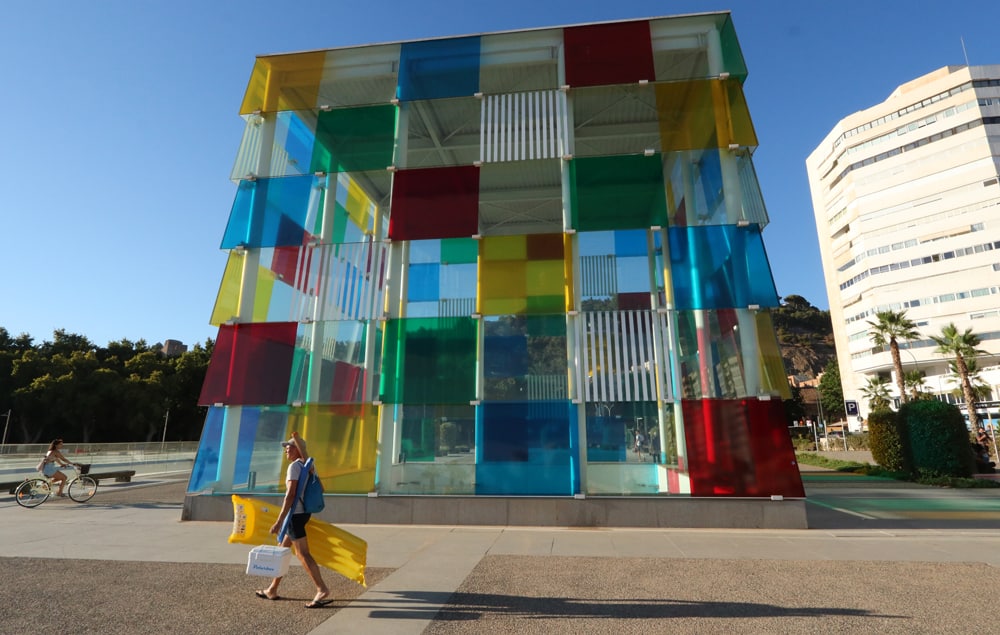
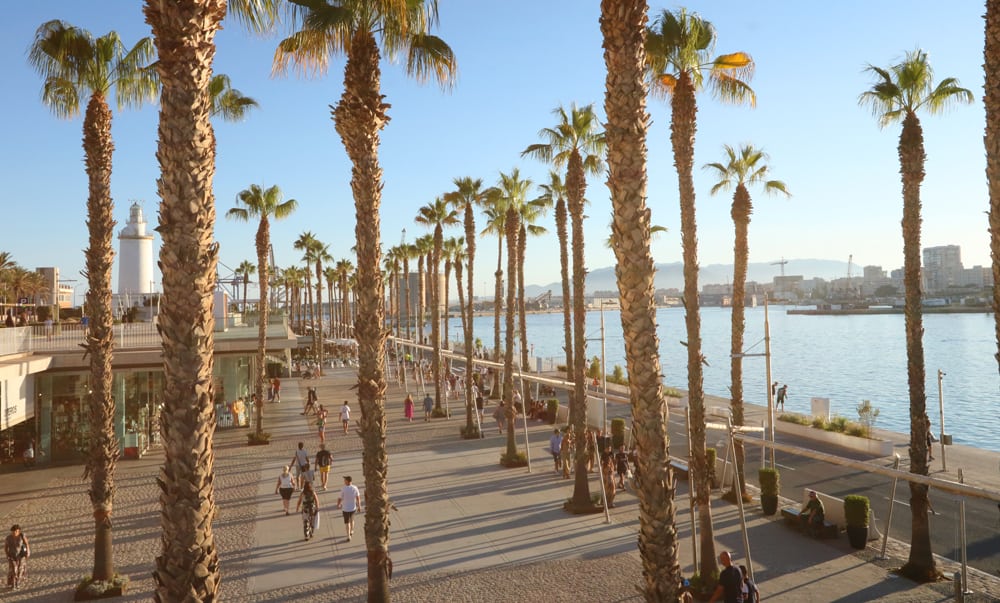
Day 3 – Granada (day 1 of 2)
Granada is one of Spain’s jewels, the last stronghold of the Muslim empire that ruled Spain for 780 years. It is the home of the Alhambra, the fortress/palace that sits on a hill overlooking the city. It is spectacular, one of the most glorious attractions in all of Spain.
Getting to Granada from Malaga: you can take a bus or train – the train is the most comfortable way and will take 1 hr and 20 minutes on the fastest route. See schedules on the Renfe website (Renfe is the Spanish rail operator).
Accommodation: The Best Hotels in Granada (for all budgets)
There’s lots to do in Granada, but the highlight is without a doubt the Alhambra. You should plan ahead for your tickets. Try to buy at least a month in advance using the official website.
The Alhambra will take up most of a day if done properly. You can walk from the city center, taking Carretera de la Gomérez (a small street across from Plaza Nueva). It’s a beautiful walk through the Alhambra forest and you’ll need about 20 minutes to get to the Puerta de la Justicia. Plan your arrival around your scheduled time at the Nasrid Palaces (you’ll have to schedule that when buying your tickets). Every other part of the Alhambra is flexible and when you visit is up to you. Once you’ve seen the Nasrid Palaces, you can visit the Alcazaba (the fortress part of the Alhambra) as well as the Generalife Gardens (the summer palace of the Nasrid Gardens). All I’ve mentioned above require that you buy the Alhambra ticket*.
*Note: The Nasrid palaces, Alcazaba and Generalife Gardens all require you to buy the Alhambra ticket. But what many people don’t know is that – if for some reason you can’t buy a ticket – you can still wander the grounds of the Alhambra and see some of the other highlights such as the palace of Carlos V and the Arab baths.
See my detailed guide to the Alhambra here.
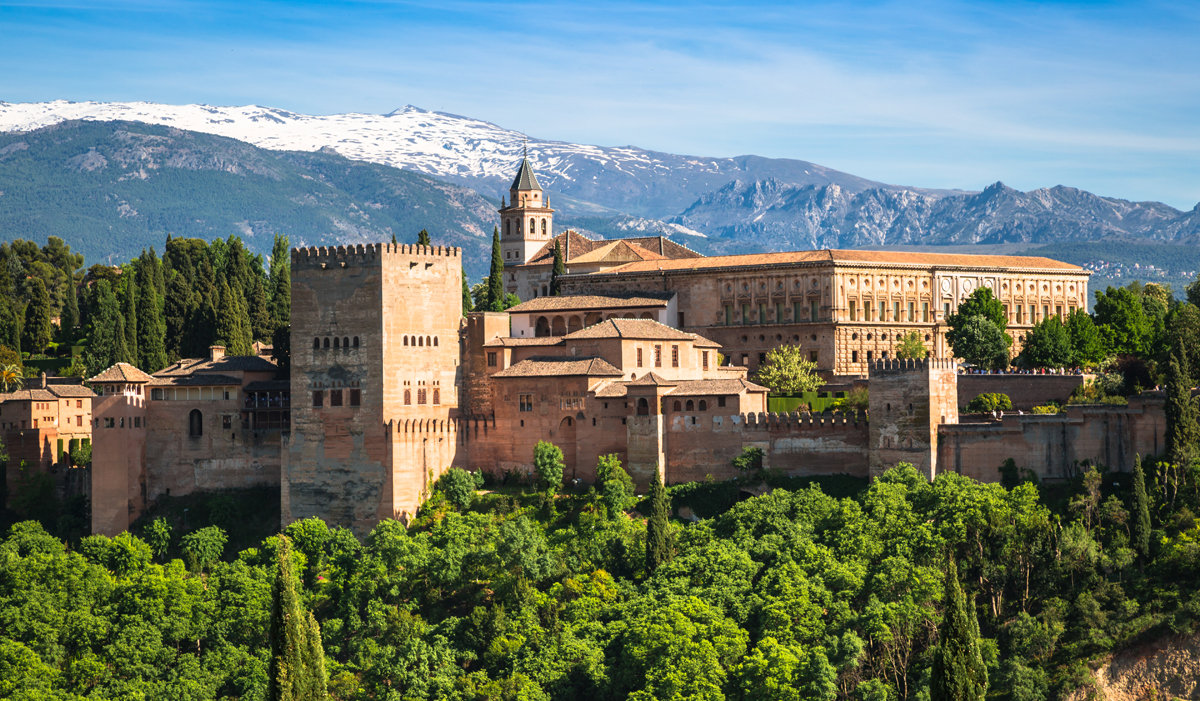
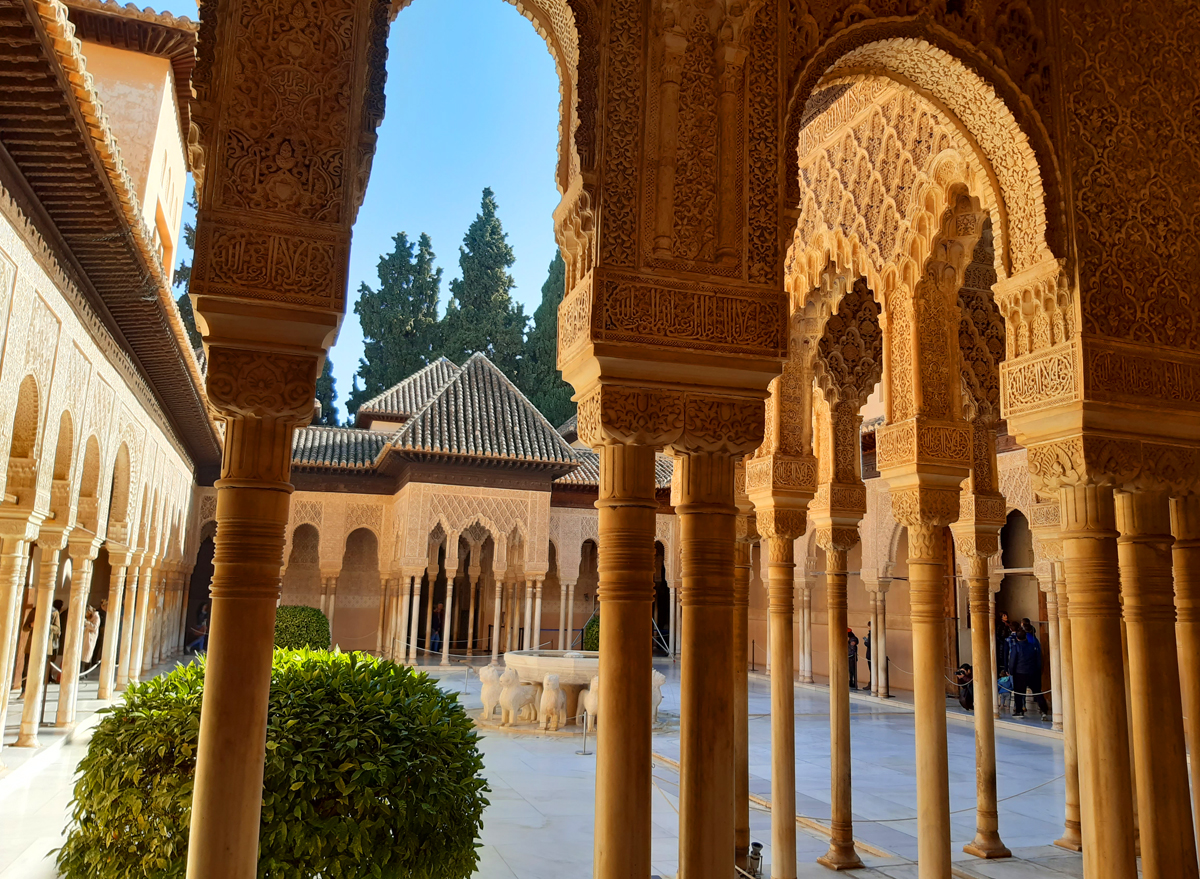
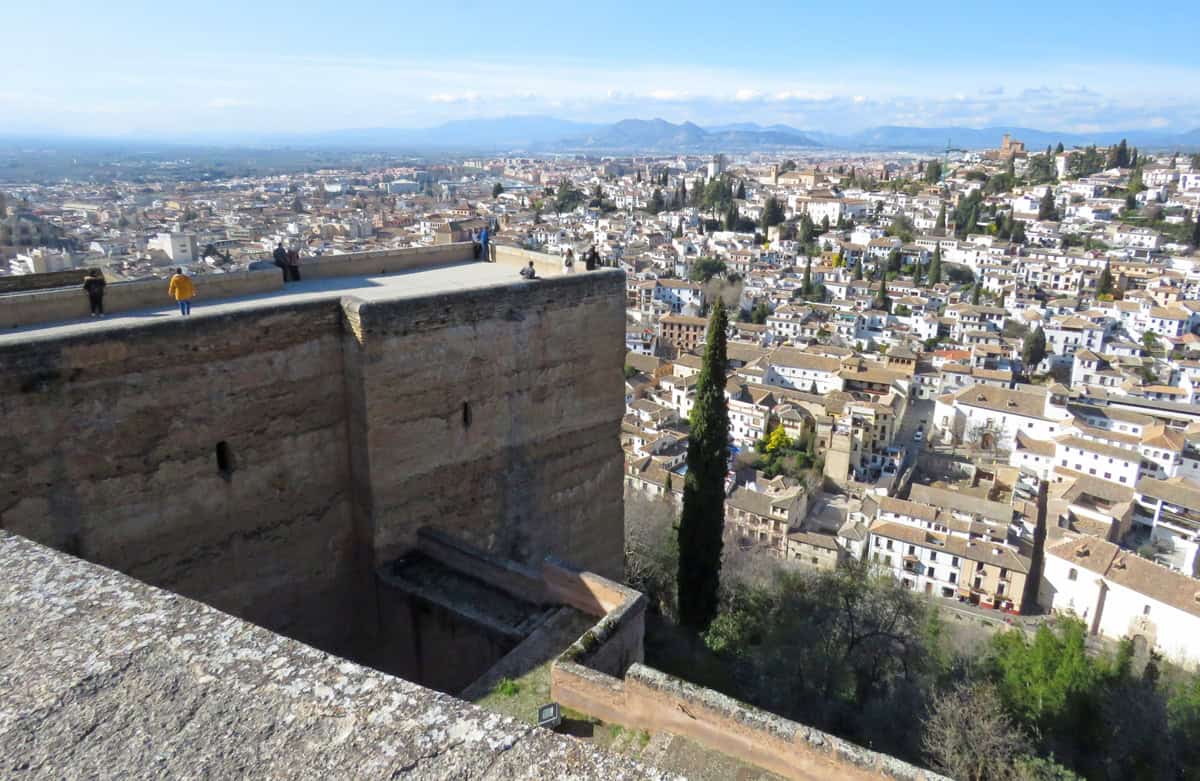
Granada has lots more to see. After seeing the Alhambra, I recommend walking down into the historic center. See the Granada Cathedral from the outside, walk through the Alcaiceria (a Moroccan-style market), see Plaza Bib Rambla…there’s lots in the old town. If you still have more time on your first day, visit the Albaicin, the old Moorish quarter. That alone deserves at least a few hours. The highlight here for most people is Mirador de San Nicolas, a viewpoint with glorious views of the Alhambra with the mountains of the Sierra Nevada in the background.
Day 4 – Granada (day 2 of 2)
Granada has lots to see and on Day 2 you might want to visit some of its incredible historic sites. What most people don’t know is that you can get free tickets to many of Granada’s highlights (the Cathedral, Royal Chapel, Cartuja Monastery, Monastery of San Jeronimo, etc). BUT you have to book those free tickets early. Recommended: prioritize the Cartuja Monastery and Monastery of San Jeronimo, then the Cathedral and the Royal Chapel.
Also very much worth it is the Basilica of San Juan de Dios. But it has no free times.
Granada is a place to walk around and enjoy the views and nature. In addition to the Mirador de San Nicolas, make your way up to the Mirador de San Miguel Alto (the highest viewpoint in town). A favorite walk if you have the time is the walk from the Albaicin to Sacromonte along the Vereda de Enmedio. Once there, another highlight are the Sacromonte Caves. I cover both the caves and the walk in this post.

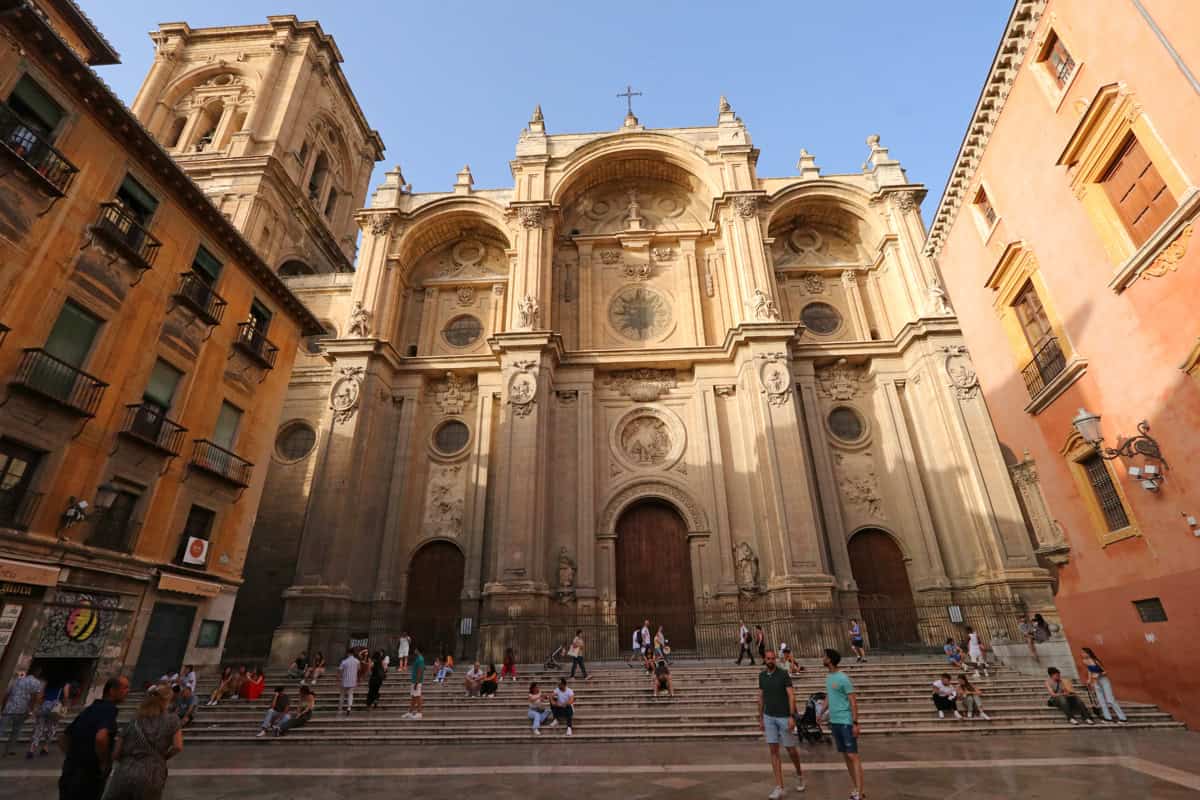
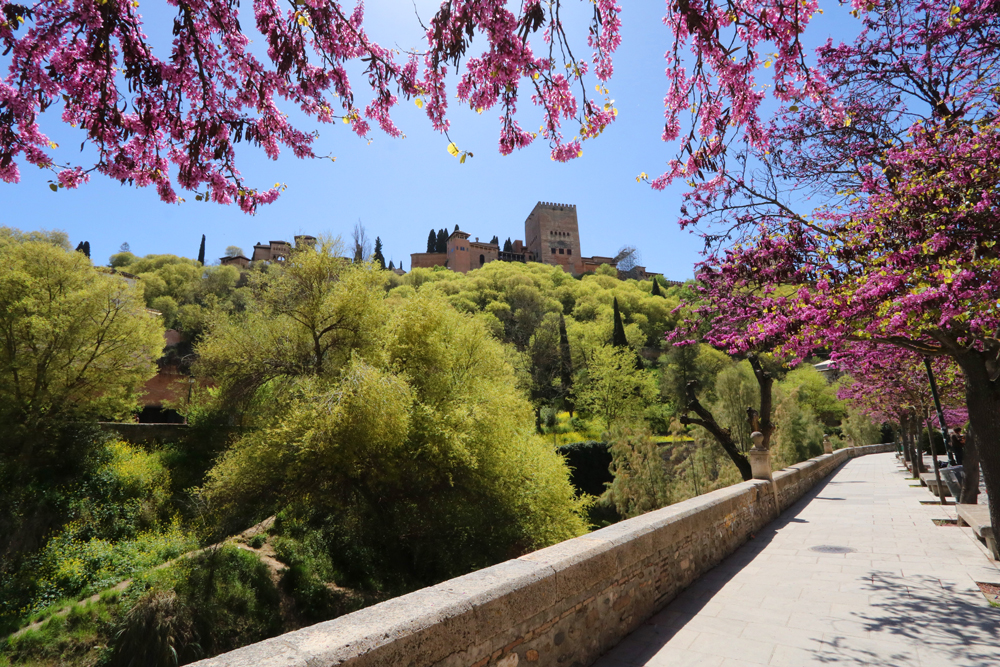
Day 5 – Córdoba (single day)
Córdoba is one of our favorite cities in Spain, we’ve been here 3 times and never get bored. And it’s home to the most amazing building we’ve seen anywhere in the world: the Mezquita – Cathedral.
Getting to Córdoba from Granada: The train will take anywhere from 1 hr 30 min to 2 hours depending on the train. See schedules on the Renfe website.
Where to stay: Hotel Posada de Vallina has an unbeatable location next to the Mezquita.
What to see in Córdoba: As I say, the Mezquita (what most people call it) is the highlight of any visit to Córdoba. In 785 the Moors built a mosque here. It took over 200 years to complete and it is huge, about the size of St. Peter’s Basilica in Rome. When the Catholics captured Córdoba in 1236, instead of tearing it down (which they did with most mosques), they built a Cathedral within its center. So this incredible building is both a mosque and a cathedral. It is a visually incredible sight. More on the Mezquita here.
Tip: Monday to Saturday, you can see the Mezquita for free between 8:30 – 9:30. Otherwise entry costs 11.50 Euros/pp. So it’s worth getting up early.
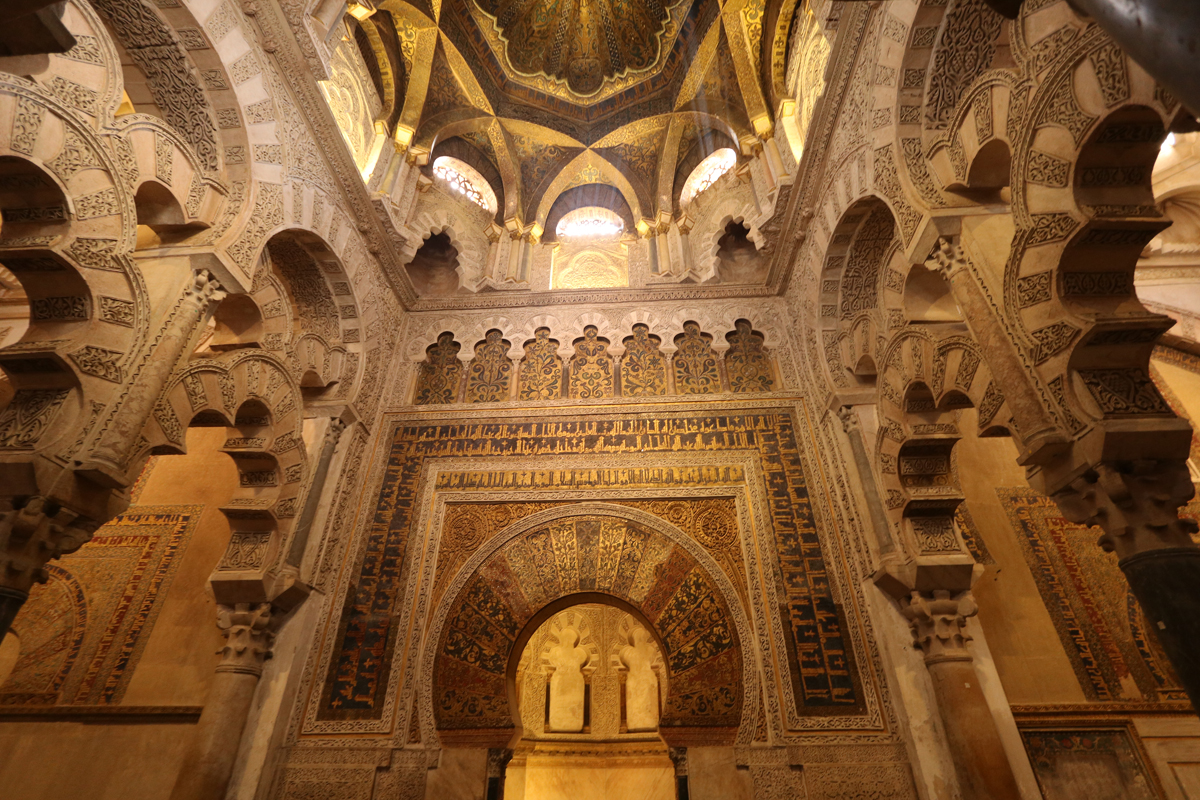
After seeing the Mezquita, there are more highlights to see: the Roman bridge was originally built in 45 BC. The Alcázar of Córdoba was a fortress/palace and the home of Catholic Monarchs Isabella and Ferdinand. It was the headquarter of the Inquisition in 1482 as well as the base from which Isabella and Ferdinand commandeered the takeover of Granada in 1492. Later that same year, Christopher Columbus came to the Alcázar to meet with the Monarchs when planning his first trip to the Americas. The Juderia (old Jewish quarter) is the pretty old town around the Mezquita and is full of narrow winding streets. Finally, if you come in May, you can visit the Patios of Córdoba which is a flower competition featuring courtyards full of flowers.
More on what to do in a day in Cordoba in this post.
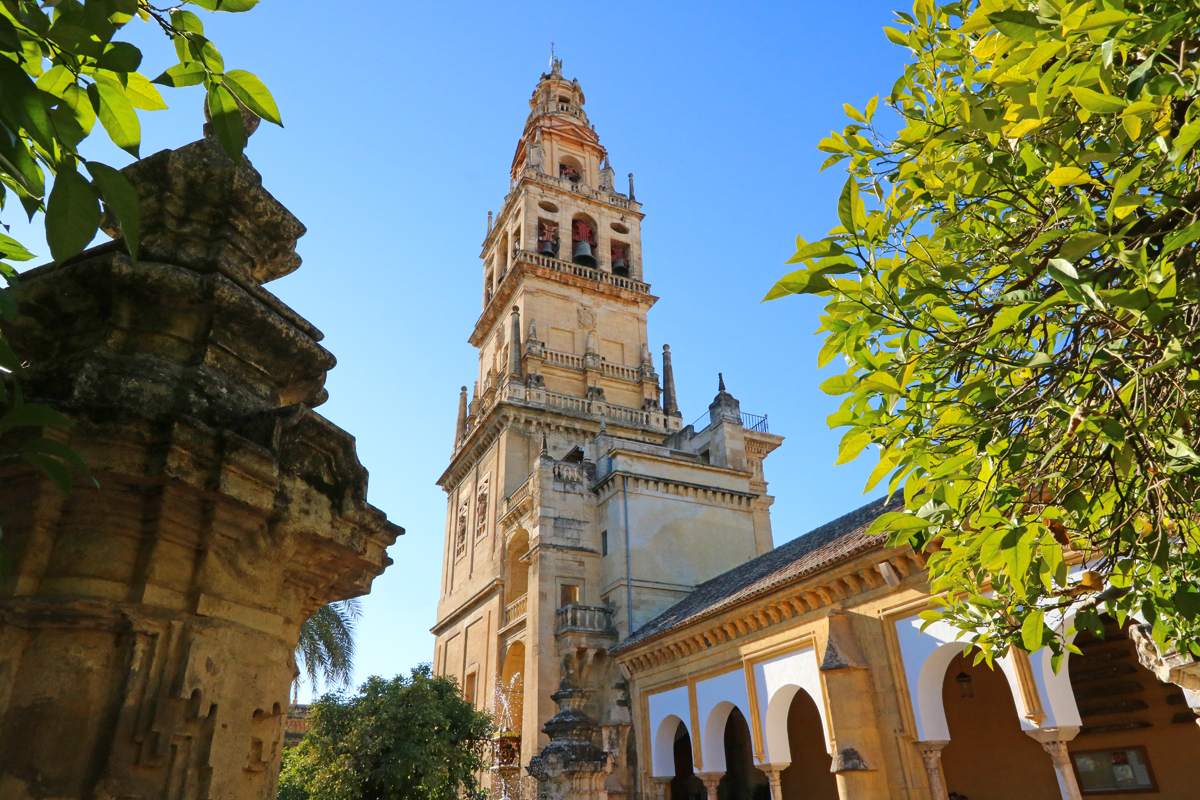
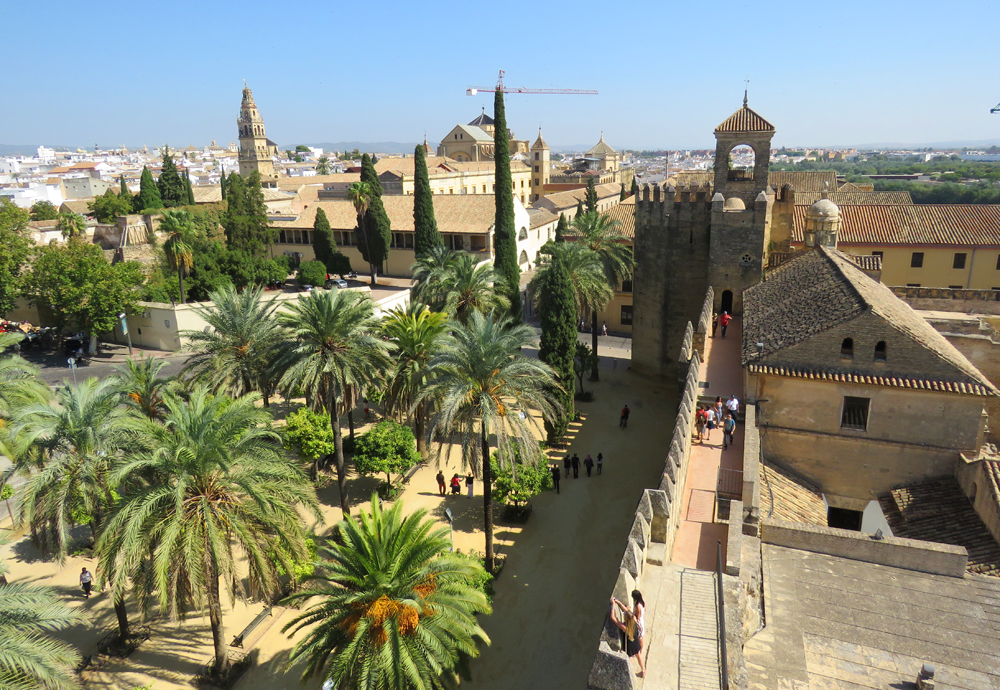
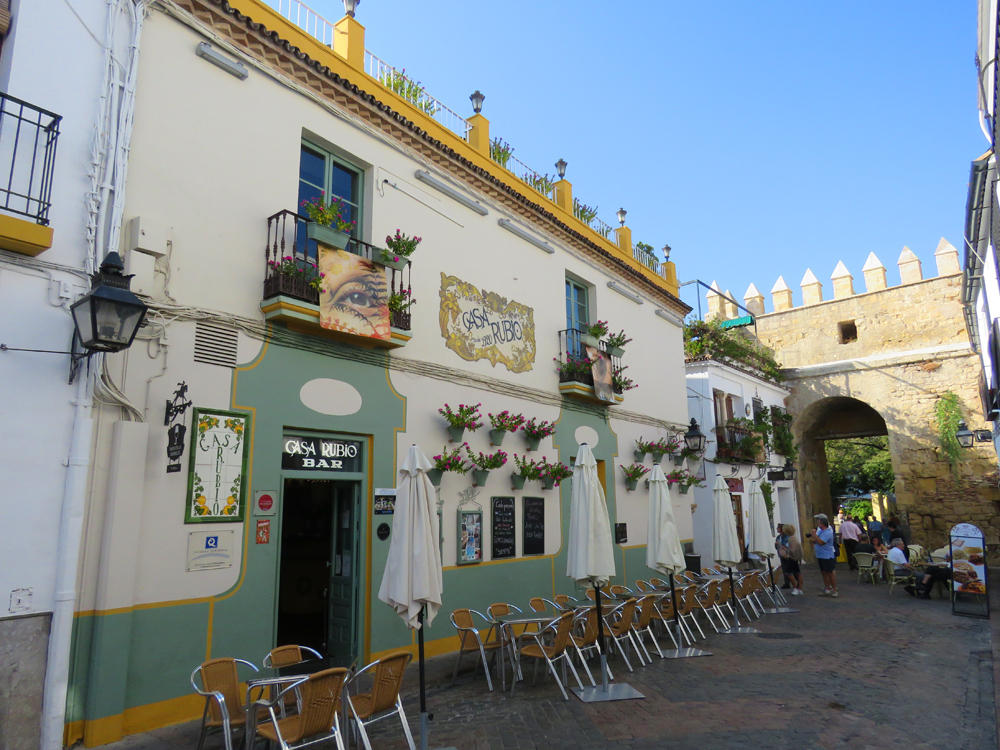
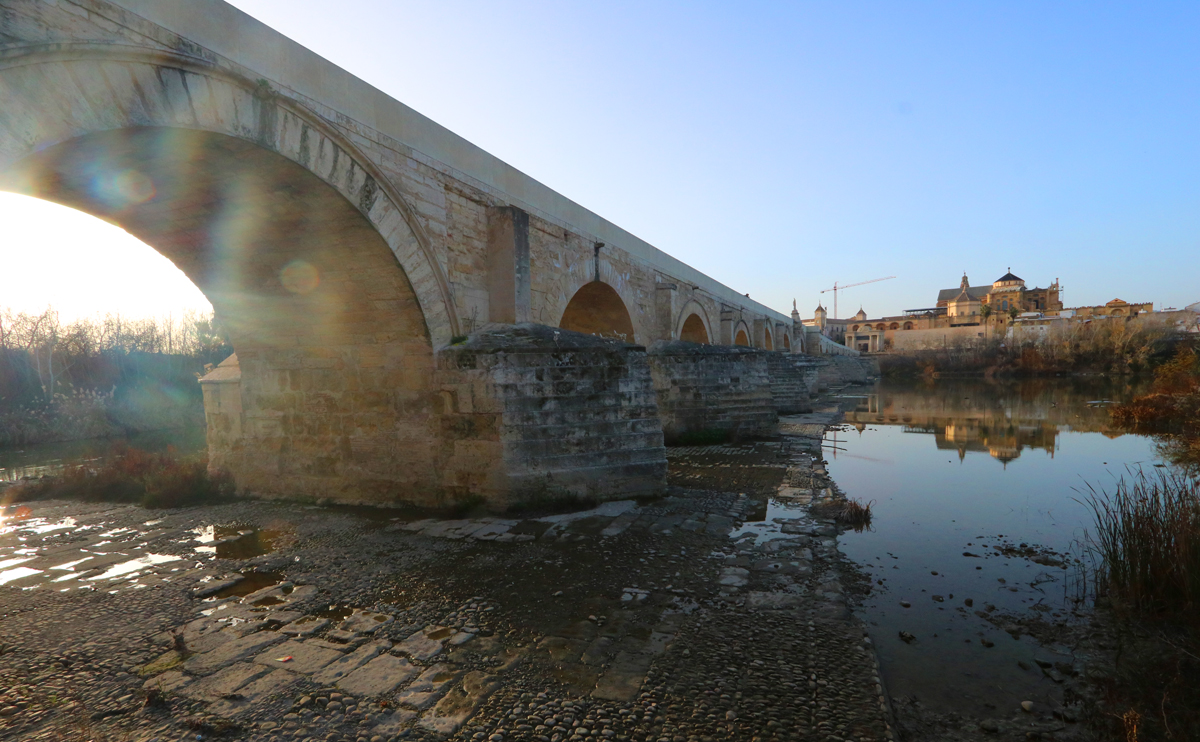
Day 6 – Seville (day 1 of 2)
One of the most beautiful, most historic cities in Spain. Giving it only 2 days is a crime because it deserves more…but you only have 10 days to explore Andalusia and I’ll tell you what you need to see (we spent 8 weeks in Seville. It’s a great city).
Getting to Seville from Córdoba: It takes about 50 minutes by train.
Where to stay in Seville: Excellent, good-value apartment near everything: Global Suites Sevilla. If you want to splurge, you can stay in a palace: Palacio de Villapanés. Budget: Toc Hostel.
What to see in Seville on your first day: the Alcazar of Seville is a UNESCO World Heritage Site and one of the best examples of Moorish architecture in Spain. Built in the 1300’s, it was the royal palace of the Moorish kings and the upper floors are still used today as the official Sevilla residence of the Royal family. Fantastic Islamic architecture, lavish and extensive gardens with ponds and fountains. Exquisite.
Money-saving tip: in the summer, there is free admittance on Mondays between 6pm -7pm. In the winter Mondays between 4pm-5pm are free. See here to book. Otherwise, regular price is 15.50 Euros/pp.
The 2nd most important highlight in Seville is Seville Cathedral. It is the 3rd largest church in the world and the largest Gothic Cathedral anywhere. The tomb of Christopher Columbus resides here. The bell tower (the Giralda) is huge and dates back to the Moors (it was the bell tower of the Mosque that stood on the site prior to the Cathedral).
Money-saving tip: Every Sunday (except holidays) you can see the Cathedral and belltower free of charge from 4:30 pm to 6pm. Only 100 tickets available weekly so book early. Book here. Otherwise the regular cost is 13 Euros/pp.
A hugely popular sight is the Plaza de Espana (which is FREE). Right next to it is the pretty Maria Louisa park (also free) and the Archaeological Museum (inexpensive).
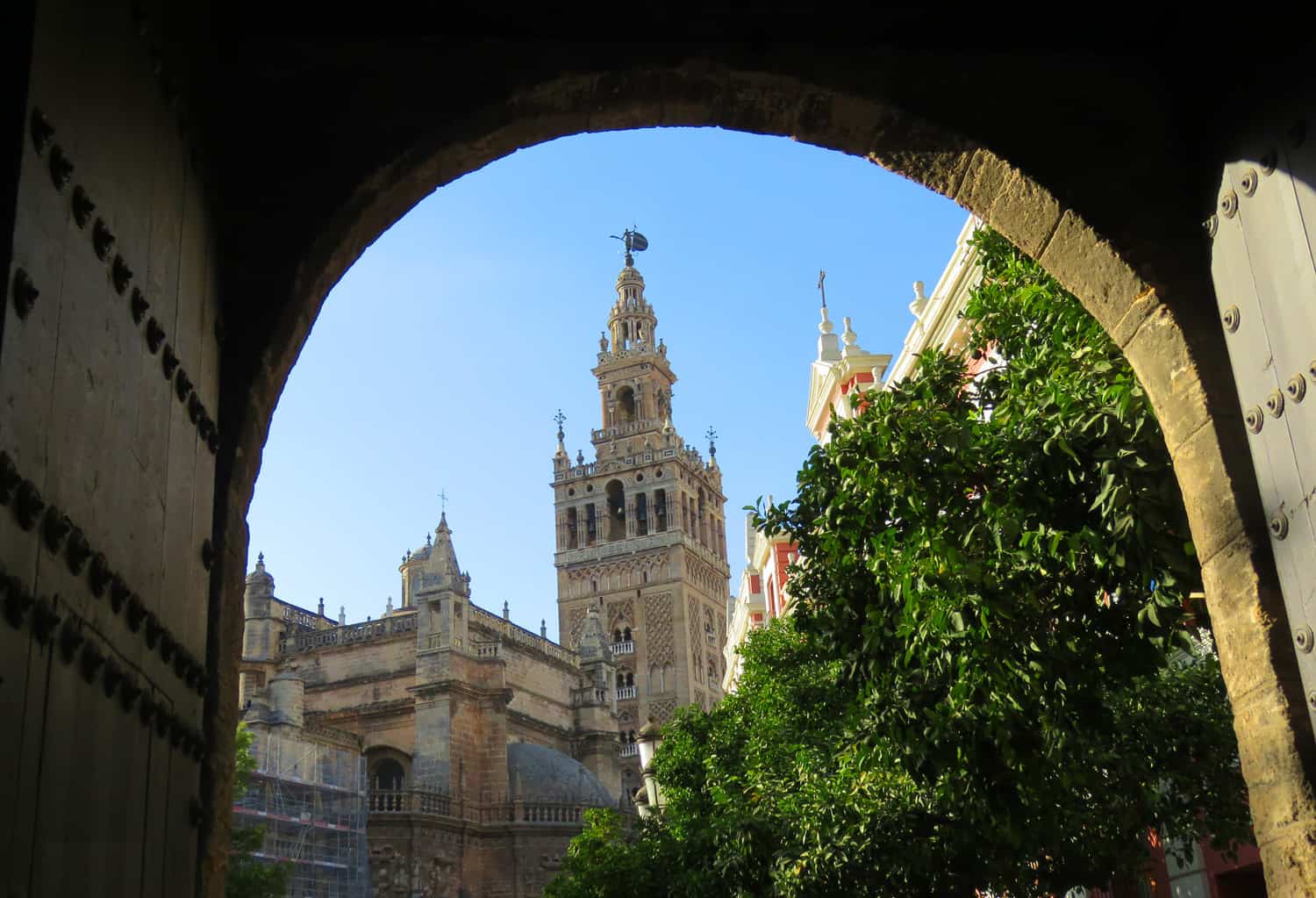
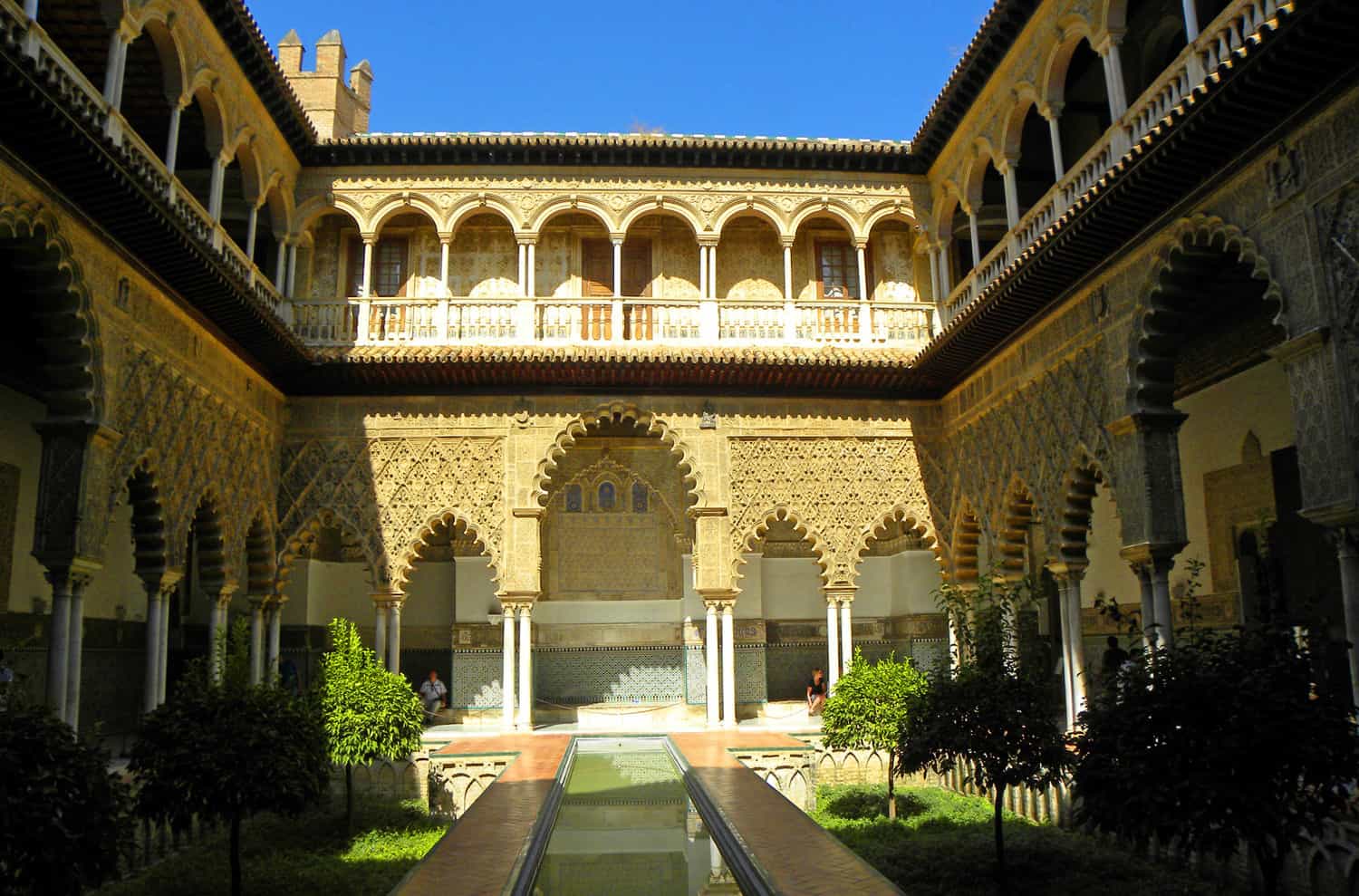
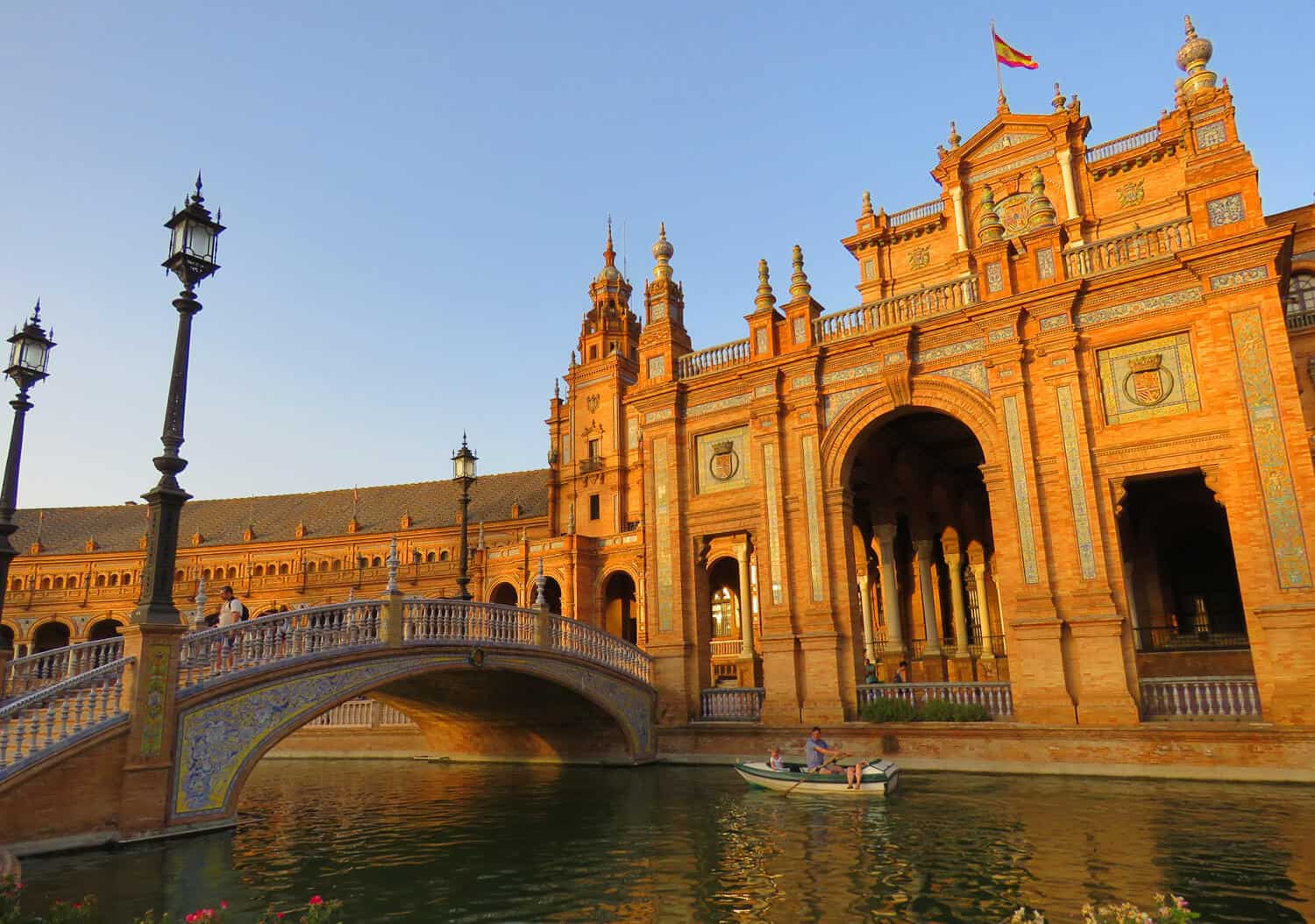
Day 7 – Seville (day 2 of 2)
On your 2nd day in Seville, you should visit some of its beautiful palaces. Palacio de las Dueñas is fabulous (free Mondays after 4 pm, otherwise 14 Euros/pp), Casa de Pilatos has incredible tilework (free Mondays 3 pm – 7 pm but only for those with an EU passport (which we haven’t seen anywhere else).
See some beautiful churches that are free: Basílica de la Macarena, Iglesia Santa María La Blanca, Capilla de San José. You wander to the Metropole Parasol which is one of the largest wooden structures anywhere (for 16 Euros you can walk the roof of it. I would advise against it, that’s a rip off. Back in 2016 we paid 5 Euros and included in that was a free drink).
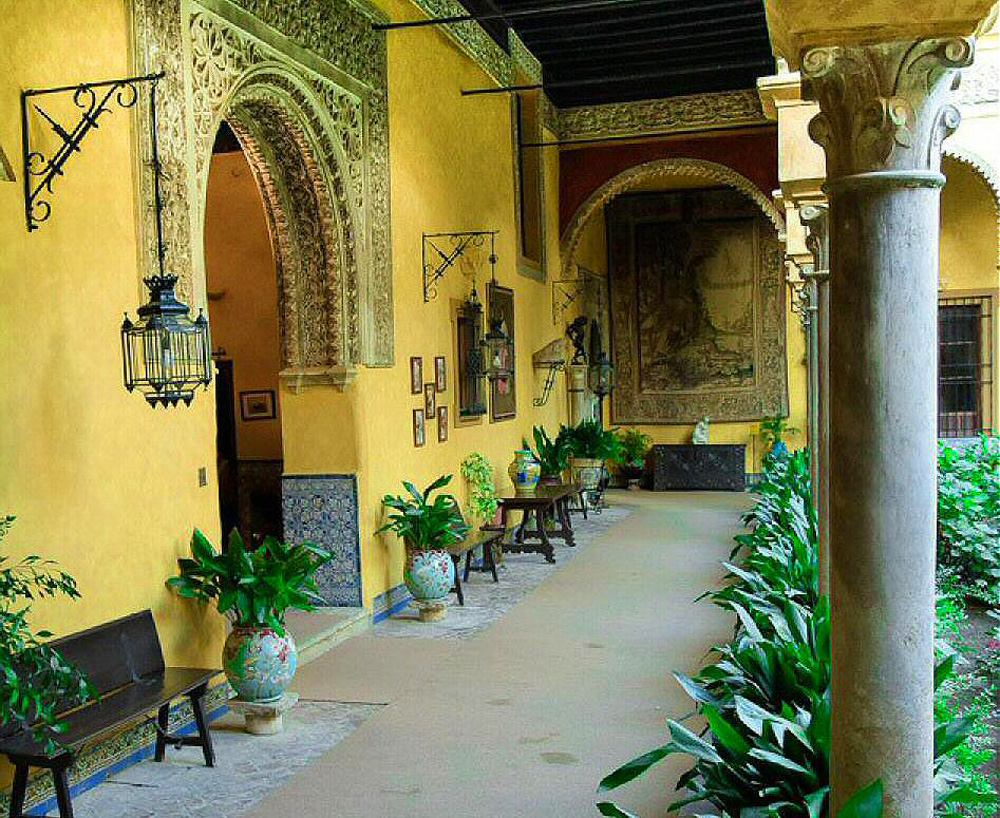
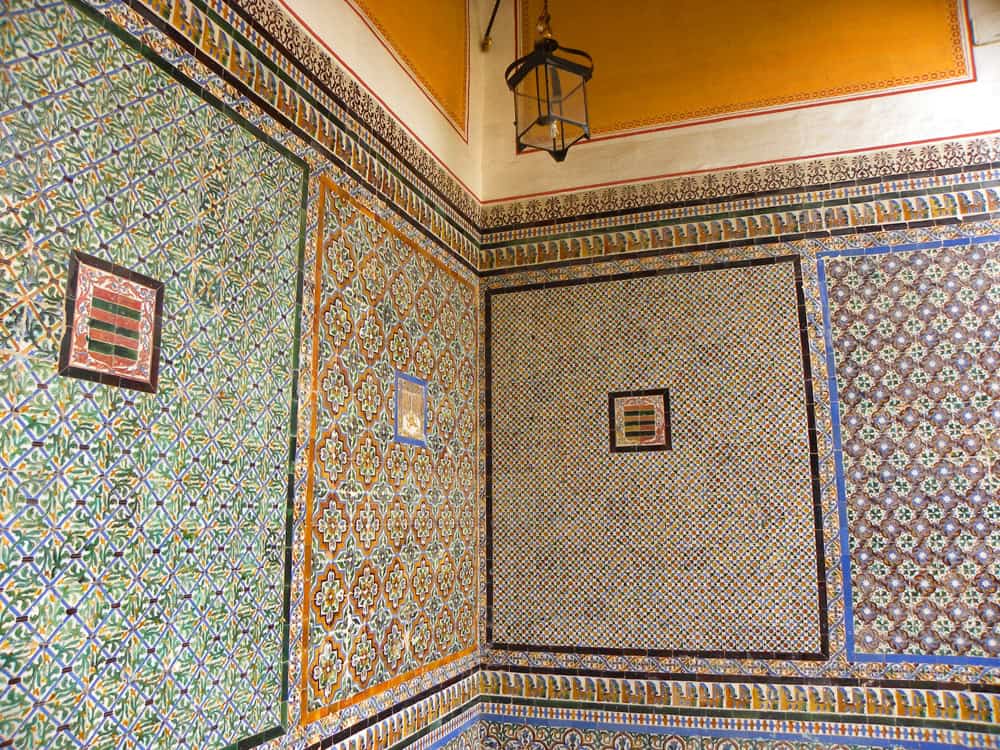
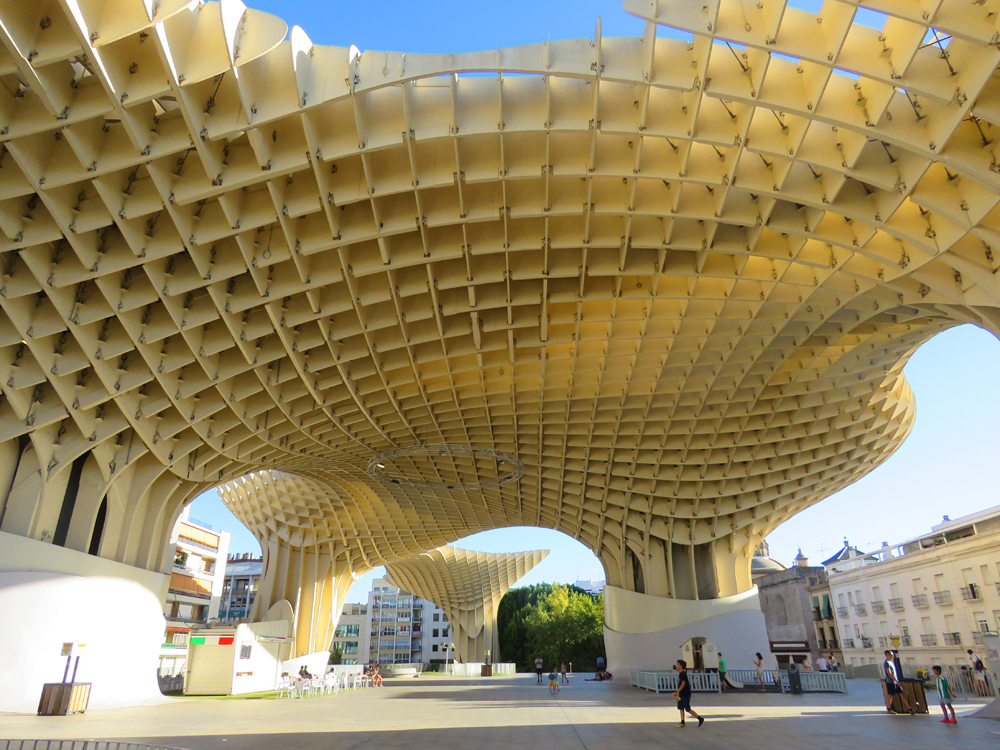
But besides all the highlights, Seville is a gorgeous city to walk around and enjoy. There’s something beautiful on every corner.
Day 8 – Ronda (Single day)
A small, historic city with a magnificent geographic location overlooking a valley and mountains. It is most famous for the Puente Nuevo (“New Bridge”) which was built over a huge gorge separating two parts of the city. But there’s more than that…
Getting to Ronda from Seville: This is the one case where taking the bus is advantageous: Damas bus gets you from Seville to Ronda in 2 ½ hours. If you take the train it will take you 3 ½ hours.
Where to stay: we stayed at Hotel Polo which was simple but good (and a great location). They have a kitchen downstairs with a kettle, dishes and anything else you need. Recommended. If you want something more fancy it has to be the Parador de Ronda.
What to see in Ronda: The highlight is the incredible Puente Nuevo which was completed in 1793. Enjoy seeing it from the different viewpoints around it, don’t bother with the ticket booth selling tickets to the inside of the bridge (which used to be a prison, now a small museum).
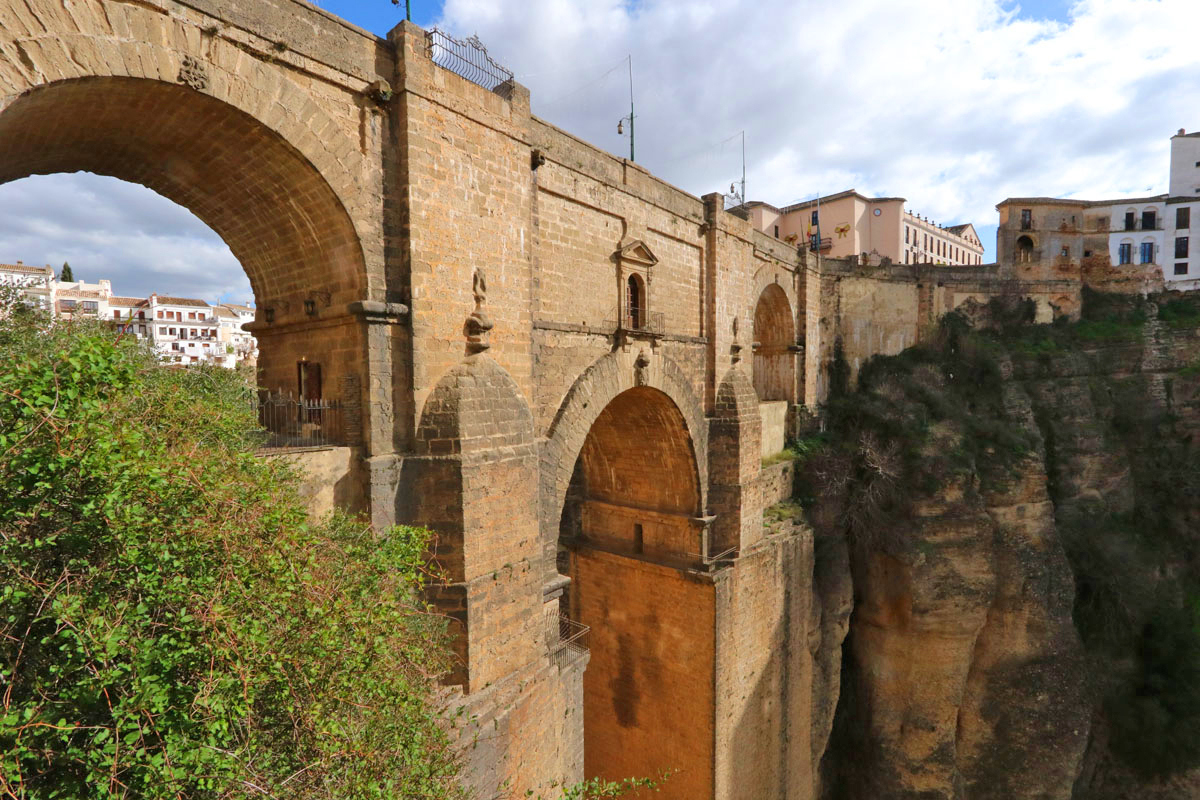
One of the most popular activities is walking down the path from Plaza de María Auxiliadora to a lookout looking back at the bridge: it’s the most iconic photo spot in Ronda.
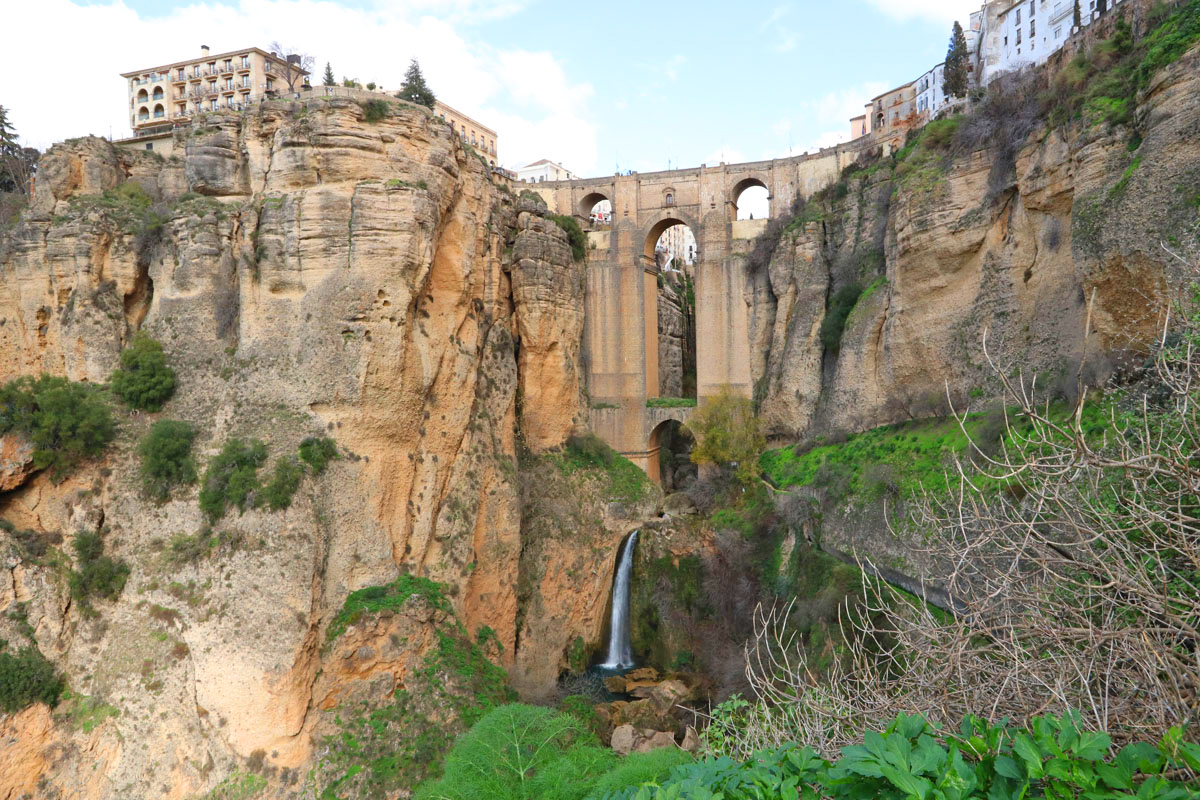
Lots more: In this post I cover what to do in a day in Ronda. It covers miradors, medieval walls, Arab baths and different views of the two bridges that span the incredible gorge that divides Ronda.
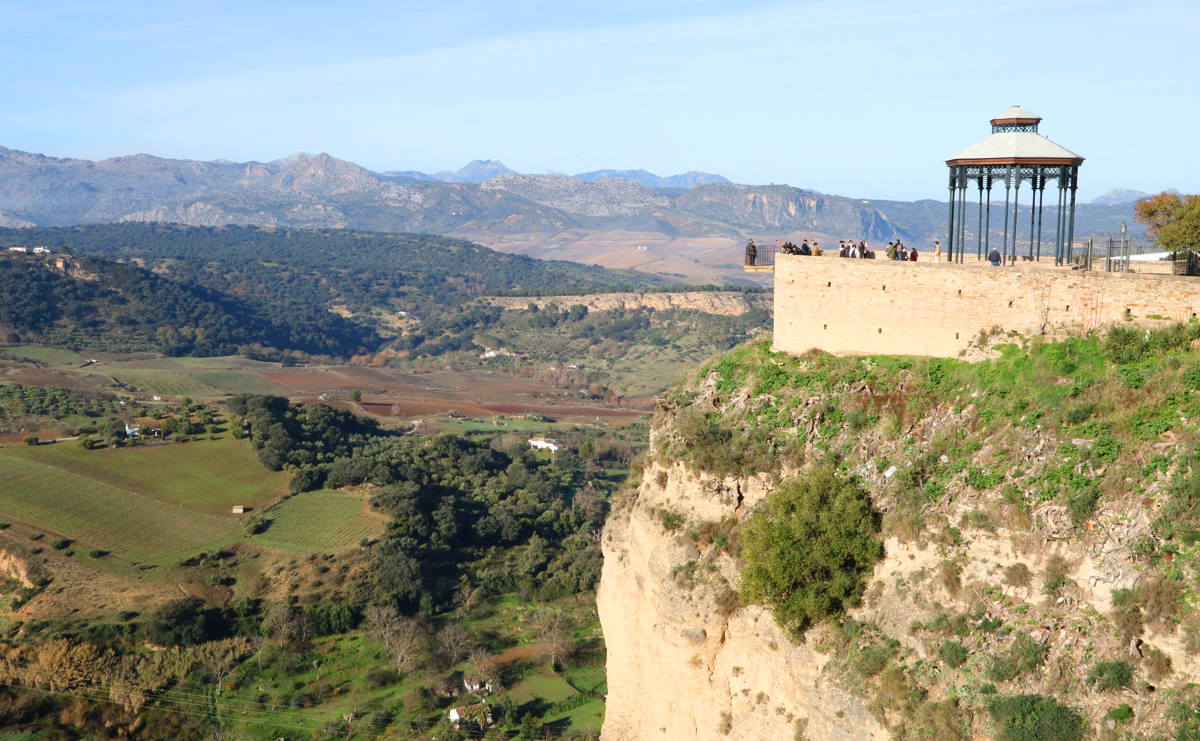
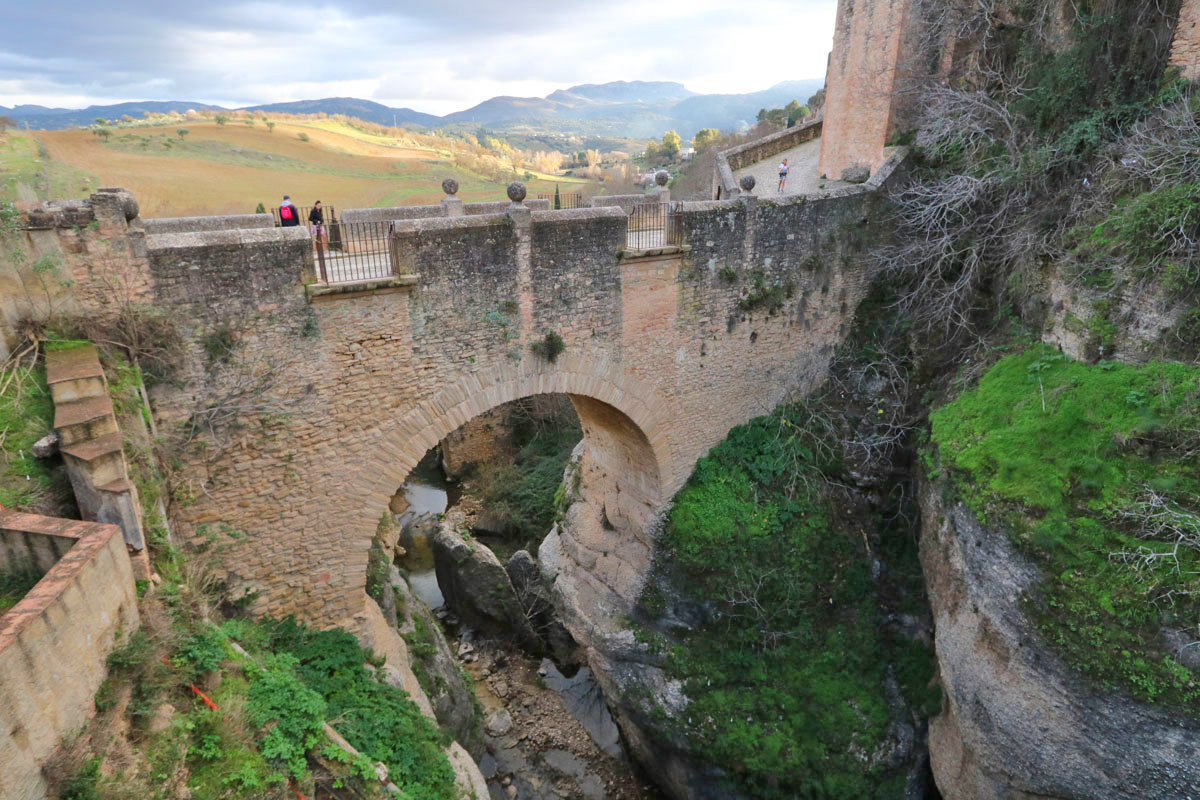
Day 9 – Antequera (day 1 of 2, heading back to Malaga for Day 10)
This itinerary has taken you to the most popular tourist cities in Andalusia. Compared to them Antequera is unknown – but when we lived there we had several people come to visit us and they swore that they enjoyed Antequera more than anywhere else because of its authenticity, nature and for it’s wonderful (and uncrowded) attractions.
Getting to Antequera from Córdoba: 1 ½ hours by train to Antequera AV station (make sure to chose Antequera AV which is in town…and not Antequera Santa Ana which is about 20 minutes away in the countryside).
Where to stay: The Best Hotels in Antequera.
On day 1, you’ll see the highlights of the city. You should start at the Alcazaba, the Moorish fortress that sits on a hill overlooking the city. The views are stunning, both over the city and to the mountains behind Antequera (the Sierra de Torcal mountain range). Note: the Fortress is free Tuesdays after 2 pm, otherwise the regular price is 6 Euros.
The whole area around the Alcazaba is full of views. In the distance you’ll see what looks like an Indian head; that’s La Peña de los Enamorados, the mysterious man-looking mountain that rises out of the nearby plains.
Back down into town, see a couple of beautiful squares; Plaza San Sebastian and Plaza Coso Viejo. Visit the churches of Iglesia del Carmen and Iglesia de Nuestra Señora de los Remedios (usually open in the evening around 7pm. Gorgeous interior). Walk down the main street (Calle Infante Don Fernando) seeing the Ayuntamiento (town hall) up to Puerta de Estepa, one of the gates of the city. Right next to it is the bullring which you can see for free (most other places you have to pay to see a bullring. In Antequera you can just walk in).
Antequera has a famous UNESCO World Heritage site: the Dolmens of Antequera which are located a 15-minute walk outside the center. Dolmens are stone tombs and these ones date back almost 6000 years, making them one of the oldest in Europe. All about the Dolmens of Antequera here.
If you enjoy views, you can go looking for viewpoints. I wrote about the best viewpoints in Antequera here.
I’ve done a video/post on the highlights of Antequera here. It’s a stunning city and what I’ve covered above is probably too much for one day…
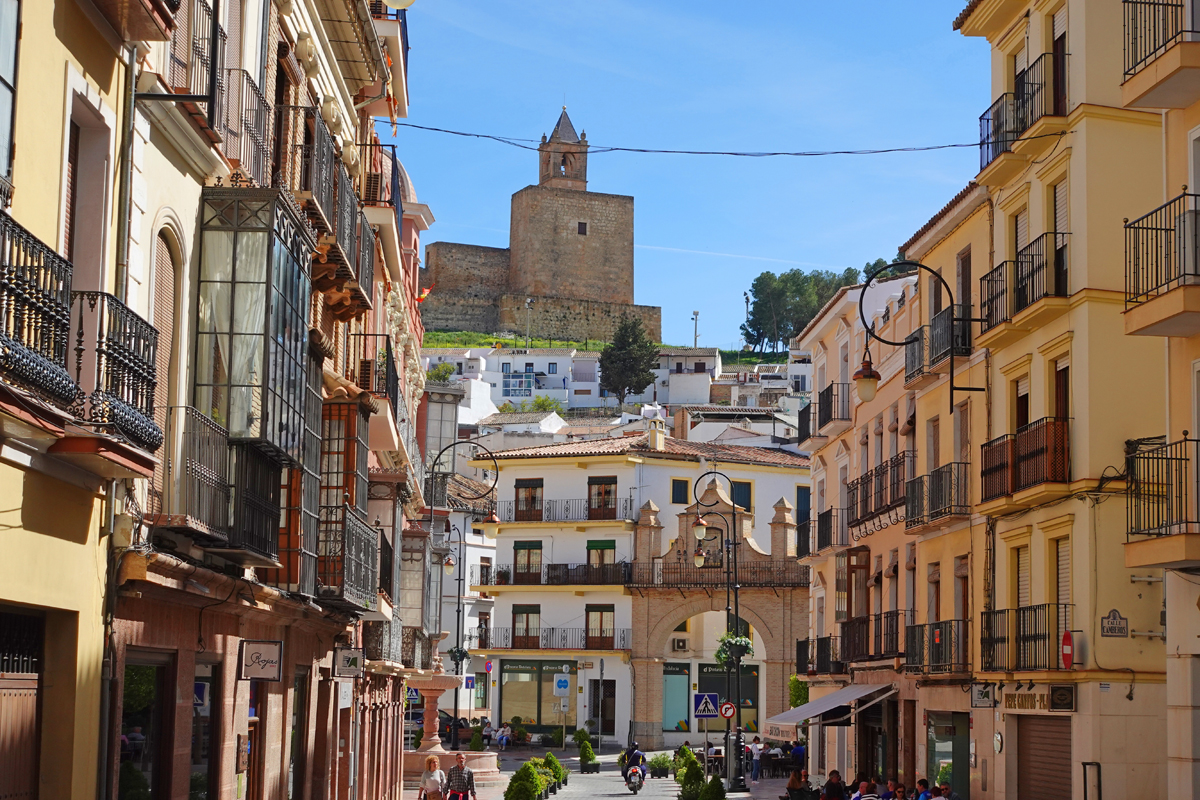
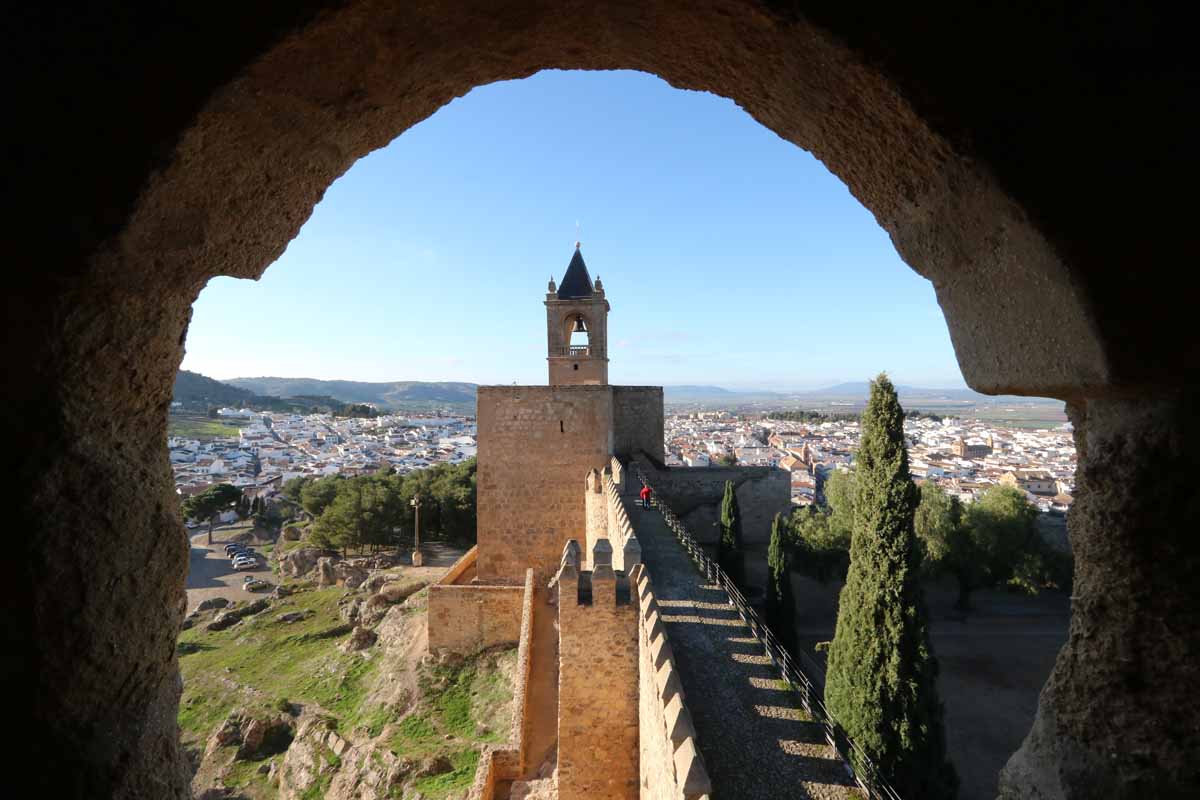
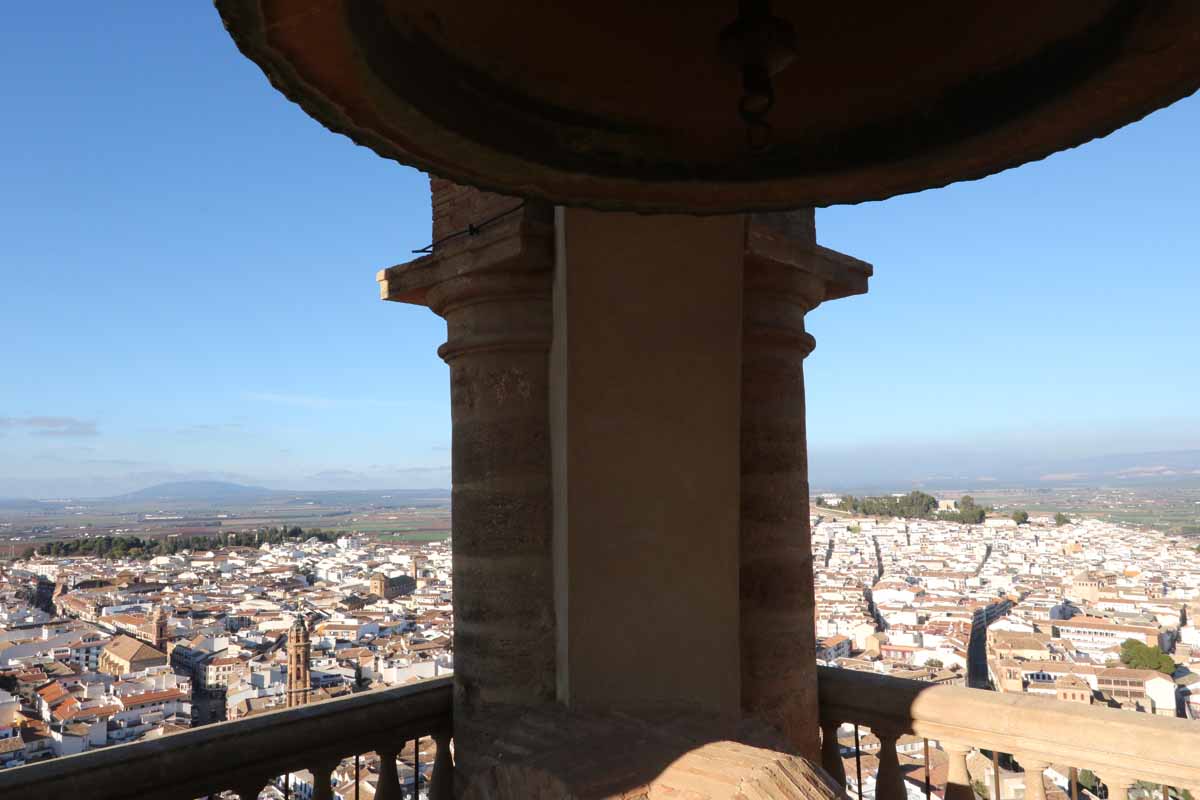

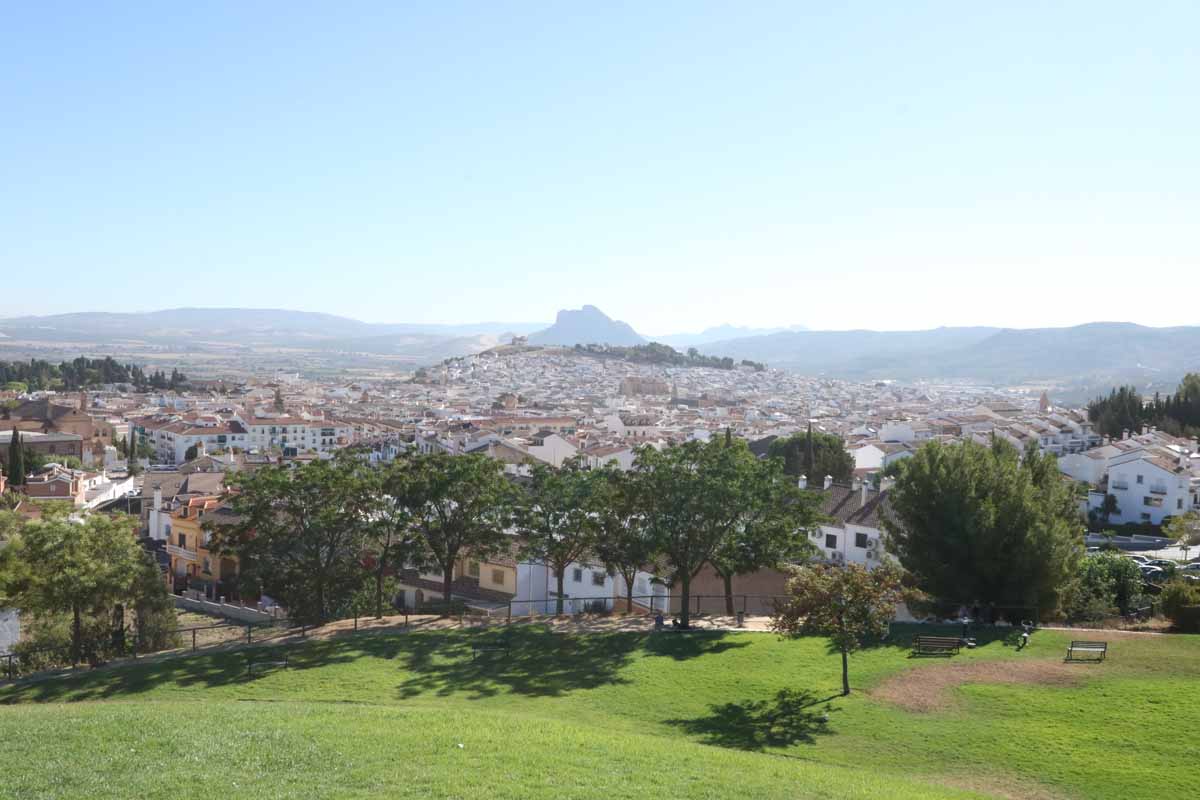
Day 10 – Excursion to El Torcal de Antequera. Back to Malaga in the evening
“Paraje Natural Torcal de Antequera” or “Torcal de Antequera Natural Park” is known for its unusual landforms and is regarded as one of the most impressive karst landscapes in Europe. Located on the top of the Sierra de Torcal mountain range, it has incredible views – on a clear day you’ll spot the Mediterranean coast near Malaga. You’ll also see wildlife, including Iberian Ibex. It is one of the region’s most beautiful nature spots.
How to get to El Torcal: You can take this tour if you wish (cost 35 Euros/pp as of writing). Or, you can hire a taxi: We have a taxi friend (Miguel) who’ll drive you up (about 25 minutes from Antequera). Tell him how long you want to stay (I recommend 3 hours) and then he’ll come and pick you up for the drive back. Cost is 50 Euros. His number: 616 118 287. Tell him I recommended him and he’ll give you the above “precio de amigo”.
I cover El Torcal de Antequera in detail on this post. It is fabulous.
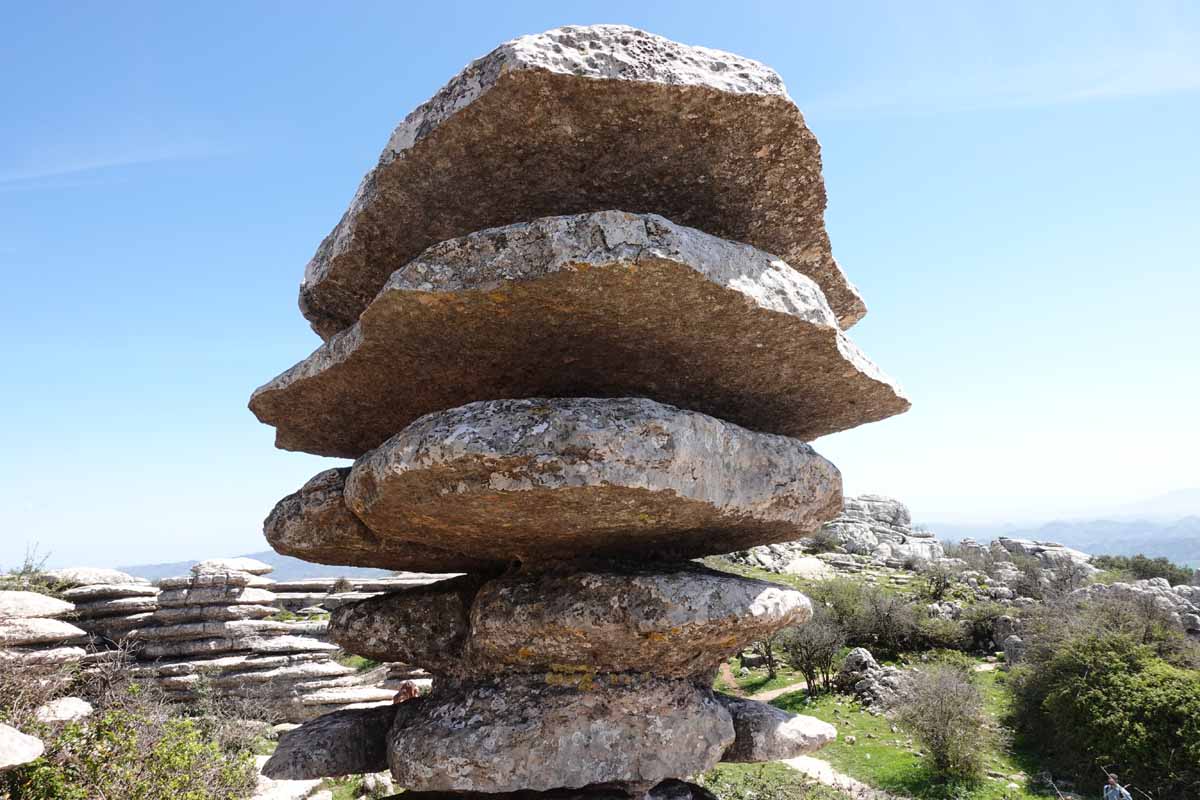
Back to Malaga.
After a day at the top of the mountain, it’s time to complete your 10-day Andalusia trip. From Antequera’s train station (Antequera AV), it’ll take 25 minutes to get the Malaga’s Maria Zambrano train station. From there you can catch your onward transportation home.
Conclusion
While you can’t see everything that Andalusia has to offer in 10 days, you’ve seen much of the best of Andalusia if you’ve followed the above: the 4 most historic cities (Malaga, Granada, Cordoba and Seville), 2 of the best adventure activities (El Caminito del Rey and El Torcal de Antequera) and you’ve discovered Ronda and Antequera, two smaller cities that combine both history and natural beauty. For anyone with just 10 days to visit Andalusia, I think the above itinerary covers the highlights of the region and gives you a mix of all that makes Andalusia such a special destination.
Related: The Best Places to Visit on Spain’s Costa del Sol
Related: What to do (and what to skip) in Alicante Province
Related: How to plan a Trip to Spain

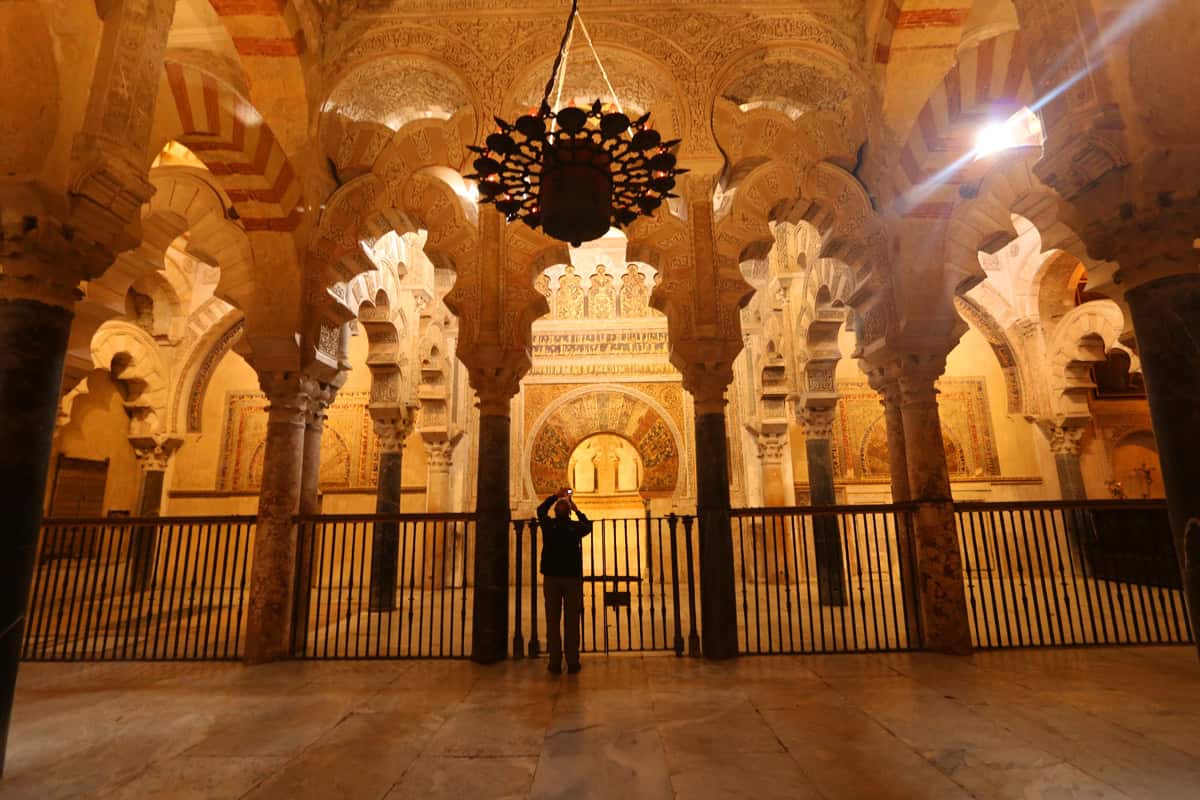
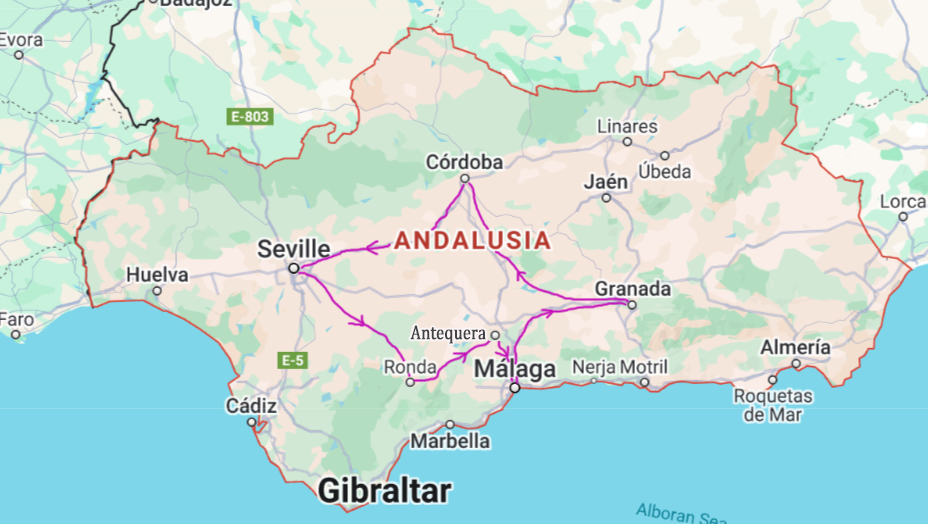
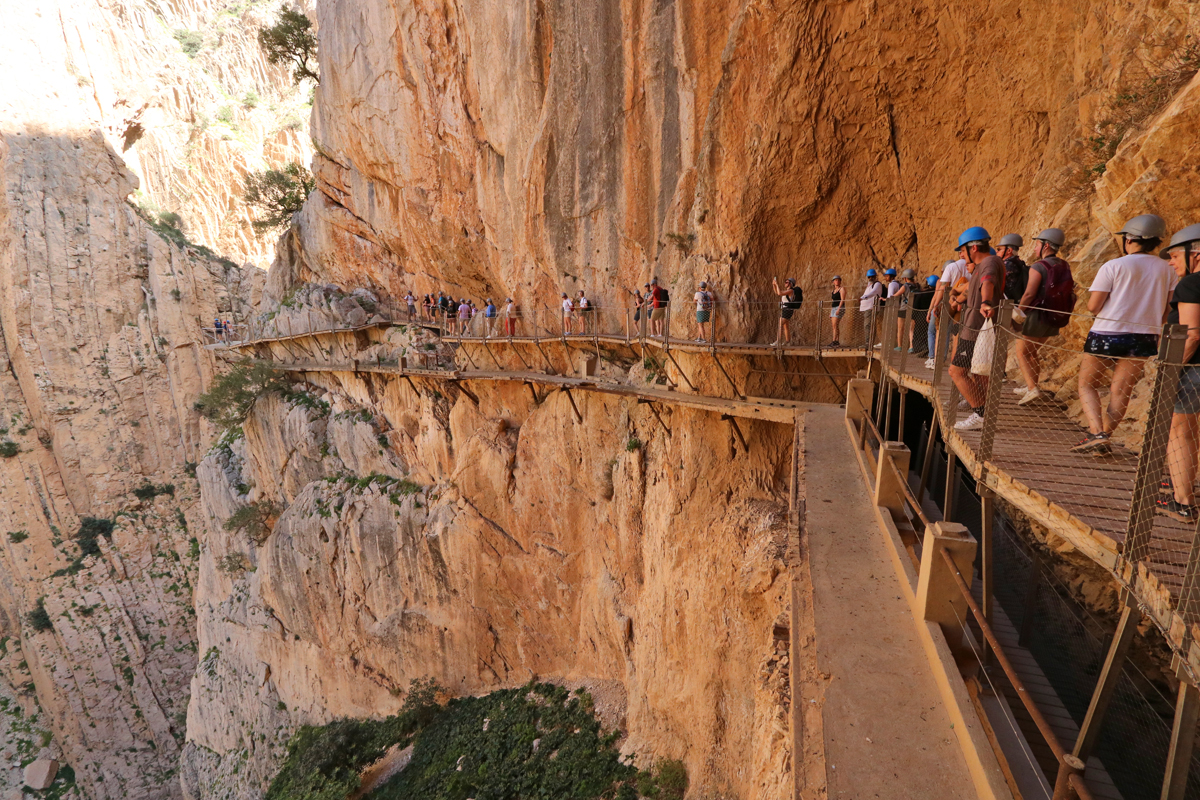
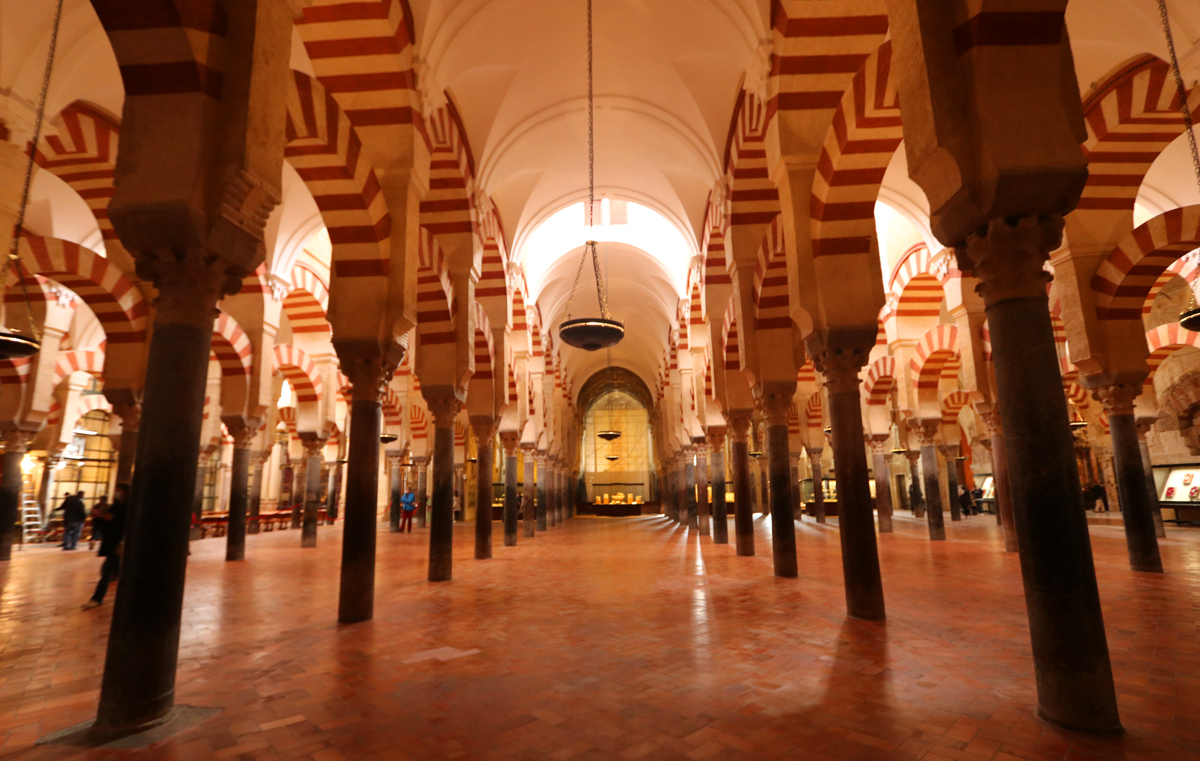
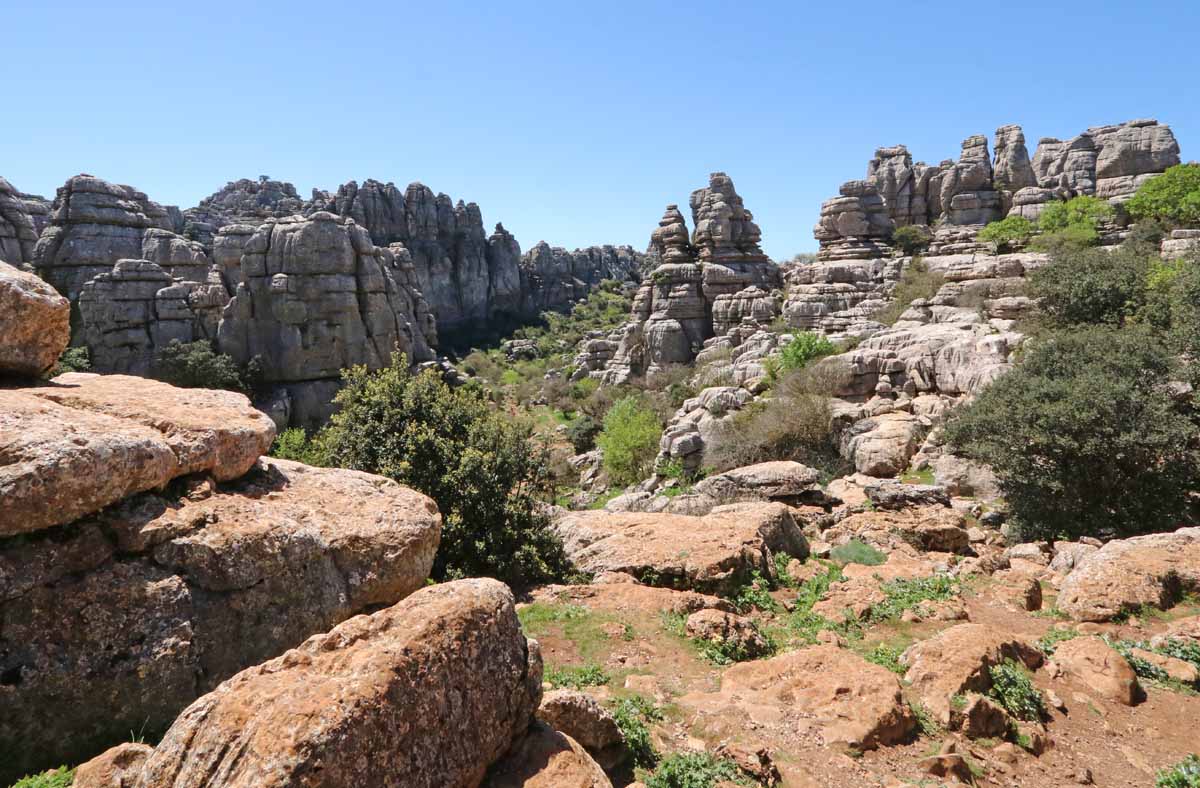
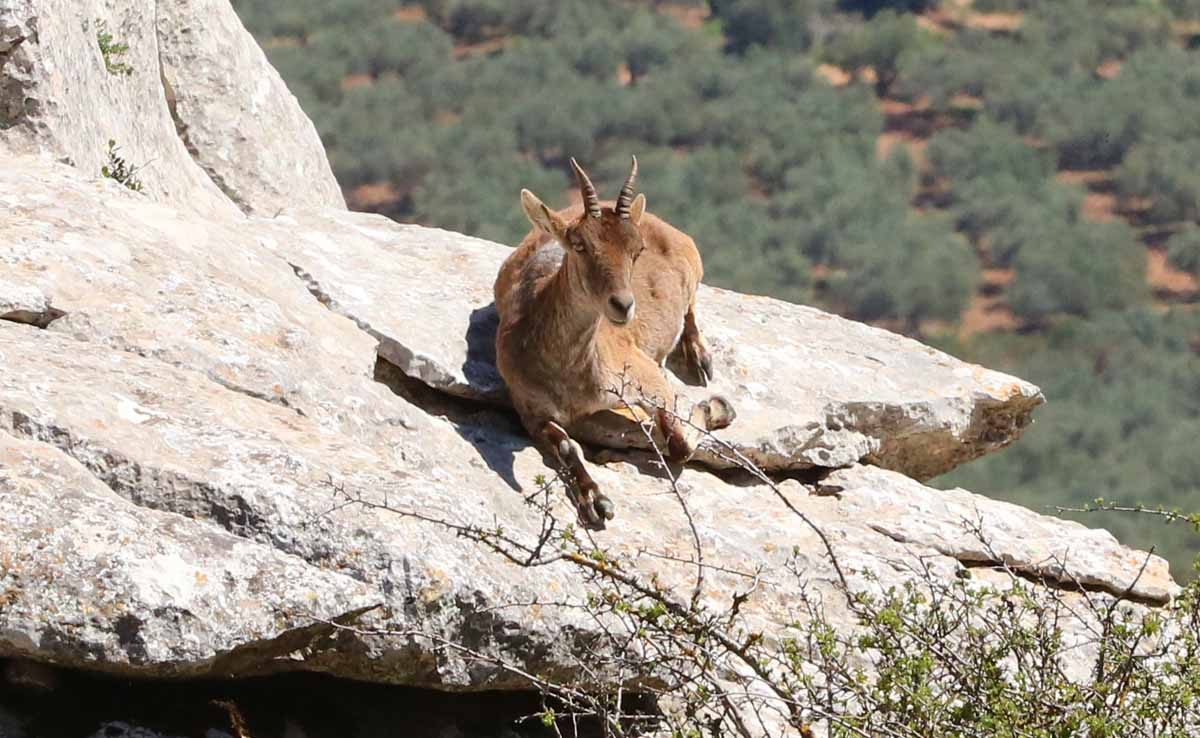

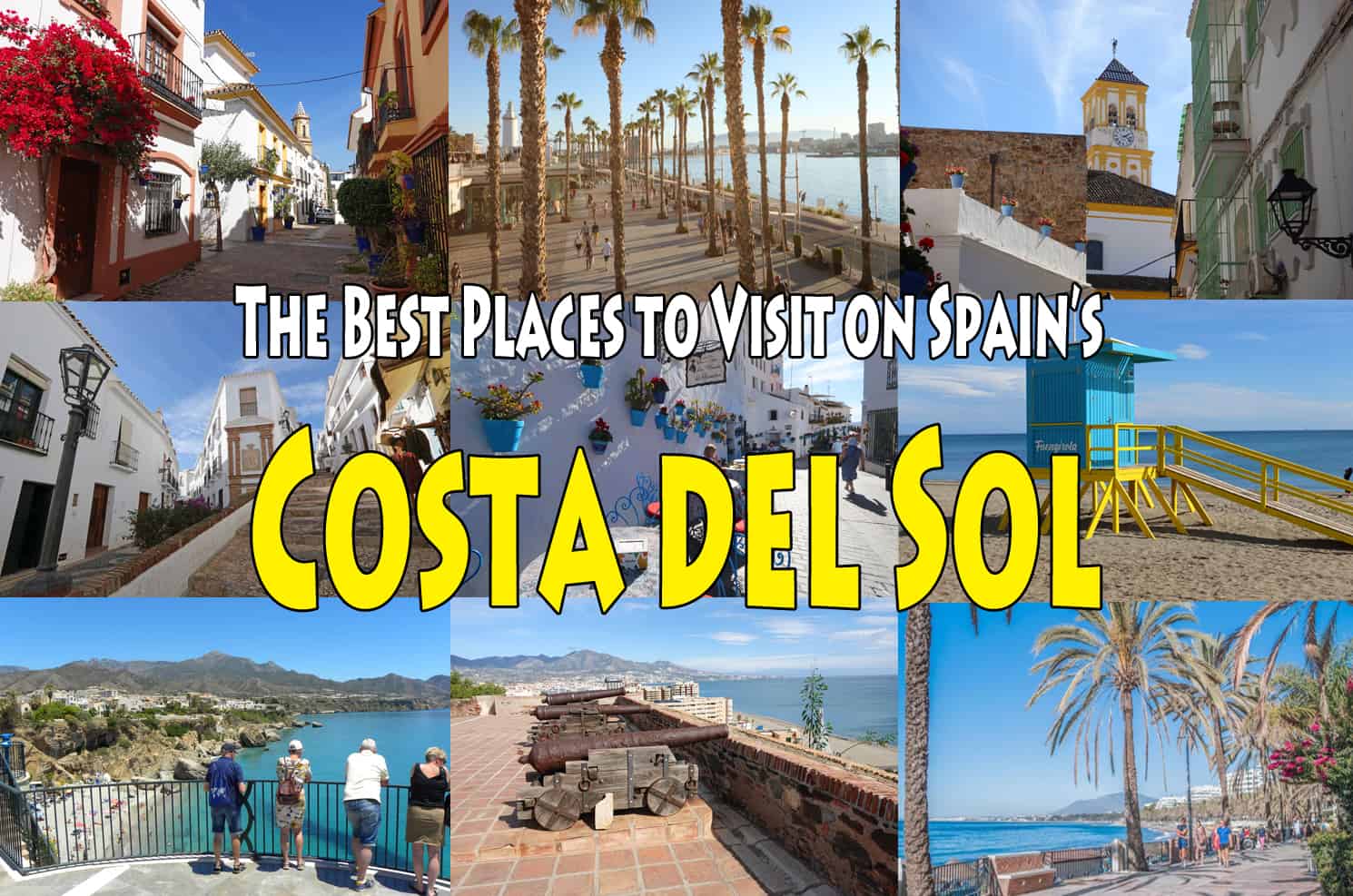
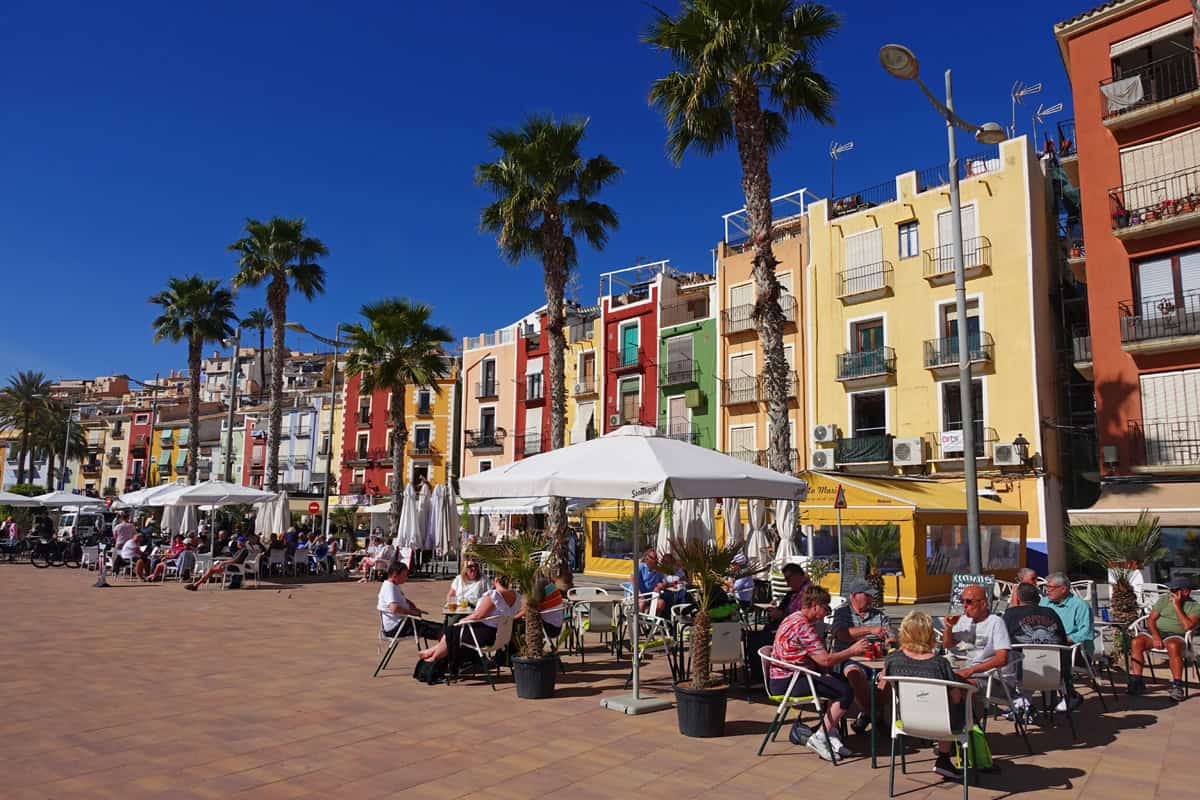
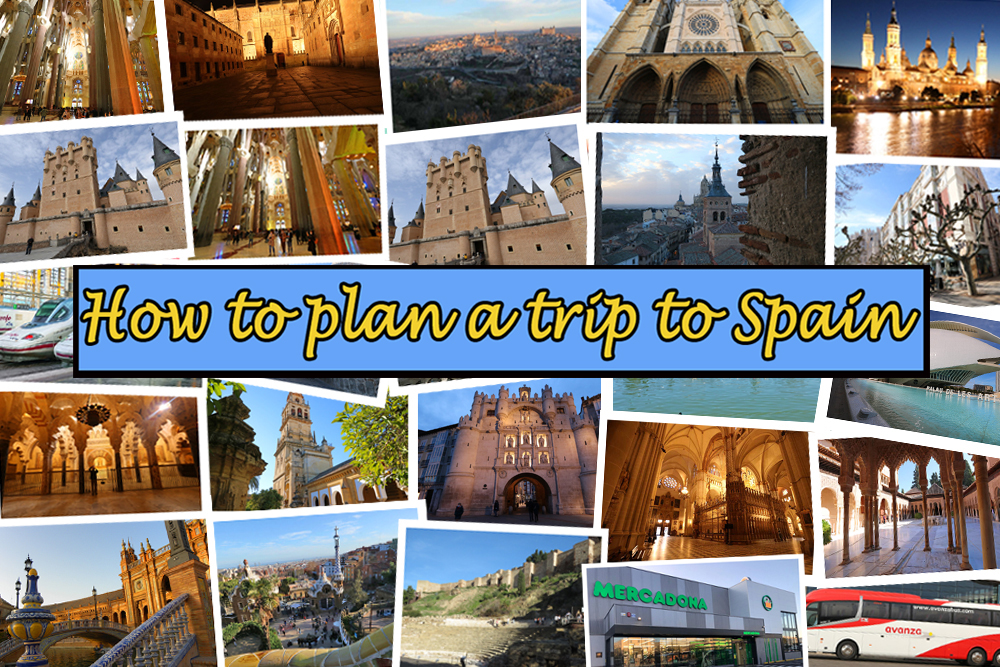
Thank you so much for this post! I have been reading both of your blogs for awhile now and I like your style and appreciate your truthfulness and candor. My husband and I will be in Spain the last week of August to the last week of September (yes! a month!) and have found this site very useful for trip planning. We travel at a slower pace and like to walk around, eat slowly and visit the highlights of a place and take ALOT of photos. We are heading north from Madrid to Burgos then Santilliana Del Mar, back down to Segovia, Cordoba, Seville, Ronda and Granada. I feel like that is already a lot to see in our timeframe, but I think it will work out well with some periods of relaxation built in to the trip. Thanks for the beautiful photos and tons of helpful information. ~ Jan from Oregon
Hi Jan! Thank you very much for the comment. That is a great itinerary and you’ll have a great time. Have never heard of Santilliana Del Mar. If you have time in Segovia, it’s worth visiting Avila. But Segovia great by itself, we were there 2 nights and wish we had stayed for an extra day.
Don’t be shy to let me know how it goes.